




The energy of ANTHOS’24 was electrifying – 163 people came to Vienna and joined online from 4-7 March, ready to launch into discussions of safety and sustainability in nano- and advanced materials, keeping conversations going late into the night, day after day! We are thrilled with the interest shown in BNN’s first large-scale conference and thank all of you who made it a success.
At the heart of ANTHOS’24 were the tools for implementing Safe-and-Sustainable-byDesign (SSbD), a cornerstone of the work we do in BNN directly with industry as well as within several projects, and it is the topic of this BNN QUARTERLY. As we stride into a new era of innovation and sustainability, it is with great pleasure that we bring you the latest developments from BNN, our members, and project partners.
In the ever-evolving landscape of new technologies, BNN takes pride in offering a cutting-edge regulatory advice service and SSbD-implementation expertise under our umbrella of Innovation Support. For our colleagues starting to prepare applications for the Horizon Europe Work Programme 2025, BNN is ready to support you. Our SSbD experts can help you assess critical hotspots related to safety and sustainability, and help you consider issues such as occupational safety and worker health, toxicology, ecotoxicology, and environmental impact from cradle to grave.
As we presented during ANTHOS’24, BNN
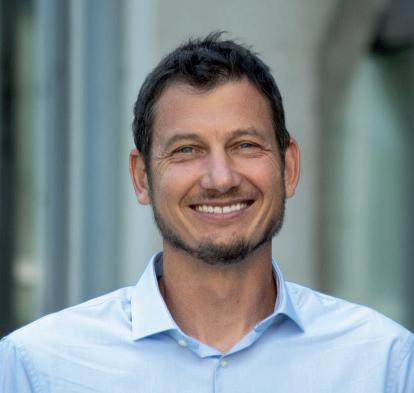
can also guide partners through the intricate process of regulatory compliance for (nano) pharmaceuticals, as well as medical devices and in vitro diagnostic devices, ensuring not only regulatory compliance but also sustainable and responsible practices when developing these types of products, including many aspects, from creation of a regulatory roadmap and gap analysis to tailored organization of meetings for scientific advice at the relevant regulatory agencies, and any other support in between.
Collaboration is key to success in this complex landscape, and BNN is delighted to be a key partner alongside SusChem-AT in the groundbreaking IRISS project. This initiative exemplifies our commitment to driving sustainable practices within the innovation process.
Austria is undeniably at the forefront of SSbD-activities, and BNN takes pride in being an instrumental force in this journey.
The CHEMSAVE-roadmap on SSbDimplementation, a national initiative, charts a course towards policy transformation. BNN is actively engaged in supporting the five “fields of action” outlined in the roadmap, cementing our role as a key player in driving sustainable change.
The intersection of regulatory guidance, SSbD-implementation, and national policy aligns seamlessly with BNN's vision to “shape the European hightech ecosystem to secure a sustainable and prosperous society”. Our commitment to excellence and sustainability extends beyond mere compliance; it paves the way for a future where responsible practices are not just encouraged but ingrained in the fabric of our industries.
Enjoy this issue full of exciting content from ANTHOS’24 and our partners!
Sincerely,
Andreas Falk, CEOINNOVATION IS THE KEY. SUSTAINABILITY LEADS THE WAY.

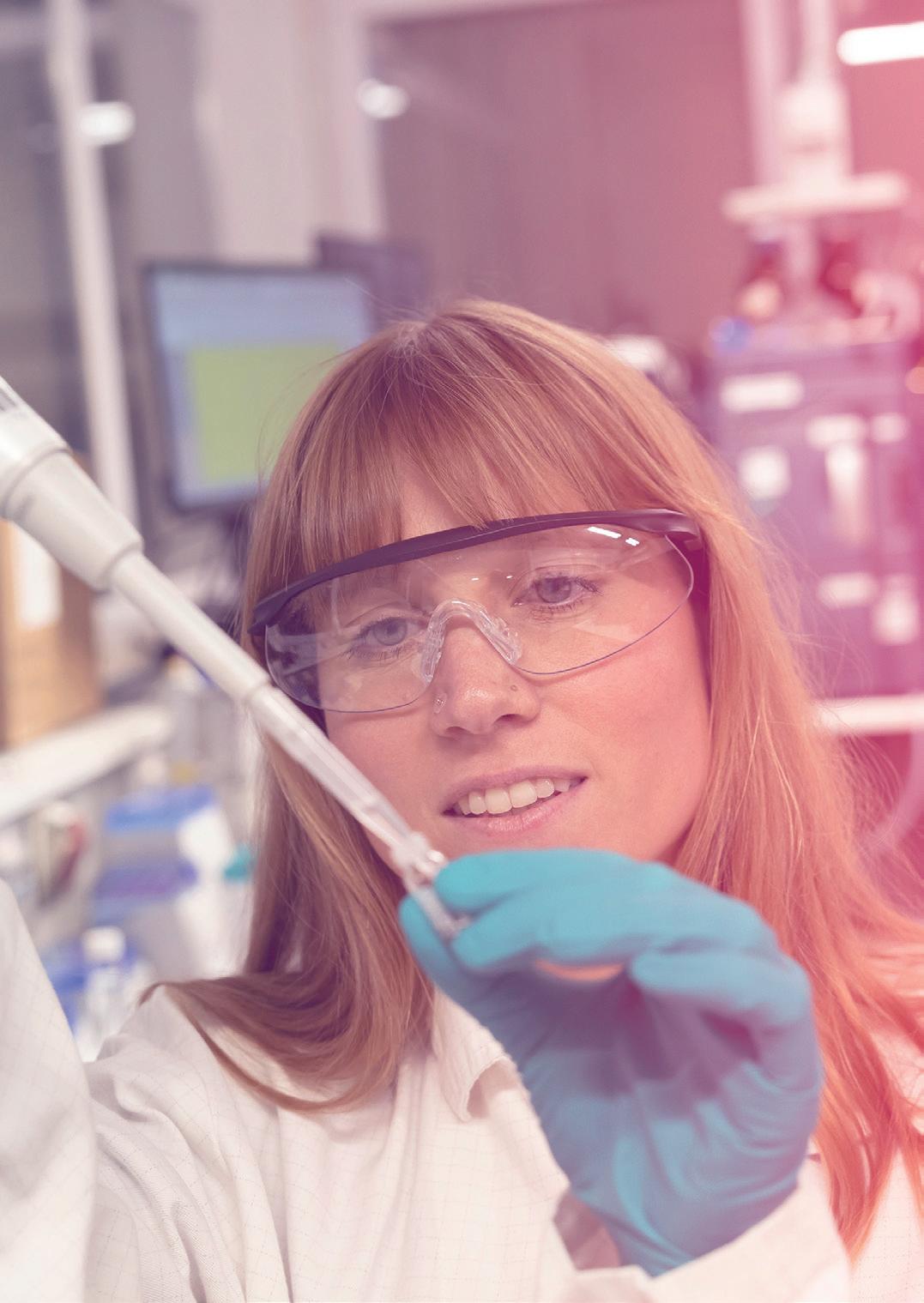


Our BioNanoNet member Prospective Instruments is a start-up located in Dornbirn, Austria, and Regensdorf, Switzerland. Founded by Dr. Lukas Krainer, it started operations in 2019.
Their main goal is it to provide the research and clinical community with a turn-key, flexible, modular and highly compact multimodal imaging platform.
Their MPX multiphoton microscope allows a large number of different experiments due its easy-to-use and flexible design. It provides a large working space underneath the 360-frontend, allowing intravital microscopy from any angle and positioning. Multimodal imaging including two-photon, SHG and epi-widefield fluorescence in the same region of the sample gains orthogonal data sets and addresses a broad range of different samples. Additional imaging techniques like Fluorescence Lifetime (FLIM) imaging or other contrast building techniques like CARS, SRS or PARS could maximize informational content and yield complementary data sets. Future developments will include improvements for even higher imaging resolutions and depth by implementing adaptive optics techniques and three-photon microscopy . Their FXS stand-alone femtosecond Lasers offer extended possibilities since they are turn-key, multiwavelength, air-cooled & 24/7 operational.
WE ARE HAPPY TO PRESENT THE PITCH VIDEO OF PROSPECTIVE INSTRUMENTS TO YOU!



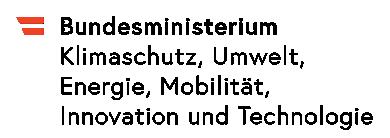


In November 2023, proposed strategies and corresponding action plans to further support the implementation of Safe-and-Sustainableby-Design (SSbD) in the Austrian R&D&I landscape were presented and discussed with key stakeholders. The Impact Hub in the vibrant center of Vienna served as an ideal location to host an interactive workshop discussing SSbD and its importance and role in Austria, focusing on the potential added value and what is needed in the future to successfully implement it. The participants of this workshop were guided through several intriguing talks by Christian Hartmann (JOANNUEM RESEARCH POLICIES), who also gave an insightful presentation himself.
The presentations seamlessly linked safety and sustainability within an interdisciplinary framework. Additionally, both a regulatory and legislative perspective were given as well. Speakers included Thomas Jakl from the



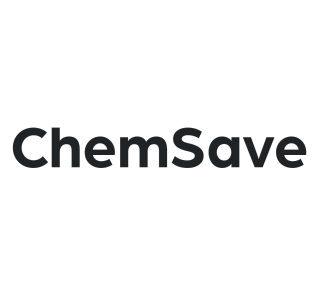
Federal Ministry of the Republic of Austria for Climate Action, Environment, Energy, Mobility, Innovation and Technology (BMK) who gave an overview on Green Chemistry, which is a central pillar of Austria’s circular economy. The status-quo of the SSbD concept and innovative approaches elaborated within the national nanoEHS project CHEMSAVE were presented by Susanne Resch (BNN) & Thomas Birngruber (JOANNEUM RESEARCH HEALTH), followed by a presentation of its sister project SiNa about the safety and sustainability of nanomaterials and advanced materials by Christoph Olscher (BOKU) & Stefanie Prenner (BRIMATECH). Finally, the workshop moderator Christian Hartmann and Anna Pavlicek (BOKU) gave the central update on the different pillars of the “Austrian Roadmap to SSbD” . A highlight of the event was the interactive discussion with all participants, providing a platform for a diverse range of perspectives to be heard and deliberated
upon. The spotlight on necessary adaptations and additions to the roadmap highlighted the intrinsic value of such joint interdisciplinary workshops. If you have any further questions, feel free to get in touch with Susanne Resch (below). Contact
Susanne Resch
BioNanoNet Forschungsgesellschaft mbH
susanne.resch@bnn.at www.bnn.at




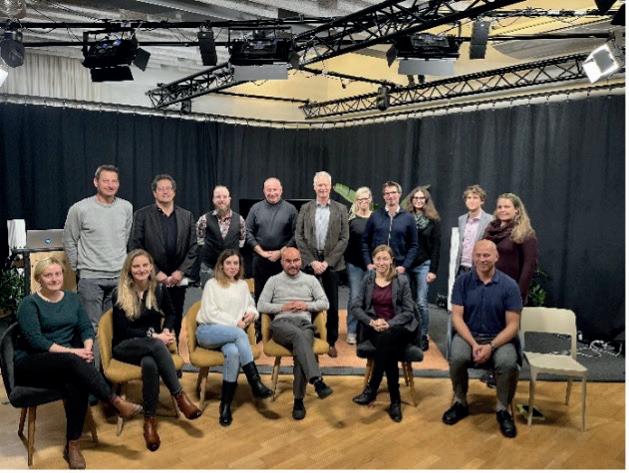
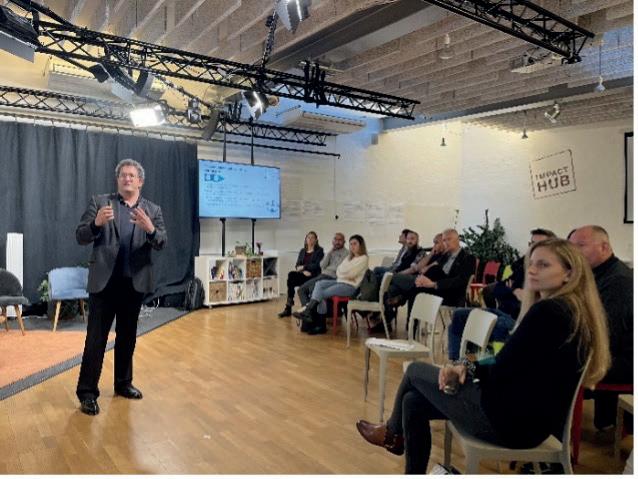
The projects CHEMSAVE & SiNa are supported by the Federal Ministry of the Republic of Austria for Climate Action, Environment, Energy, Mobility, Innovation and Technology (BMK), serving as the funding body, with the FFG acting as an intermediary.

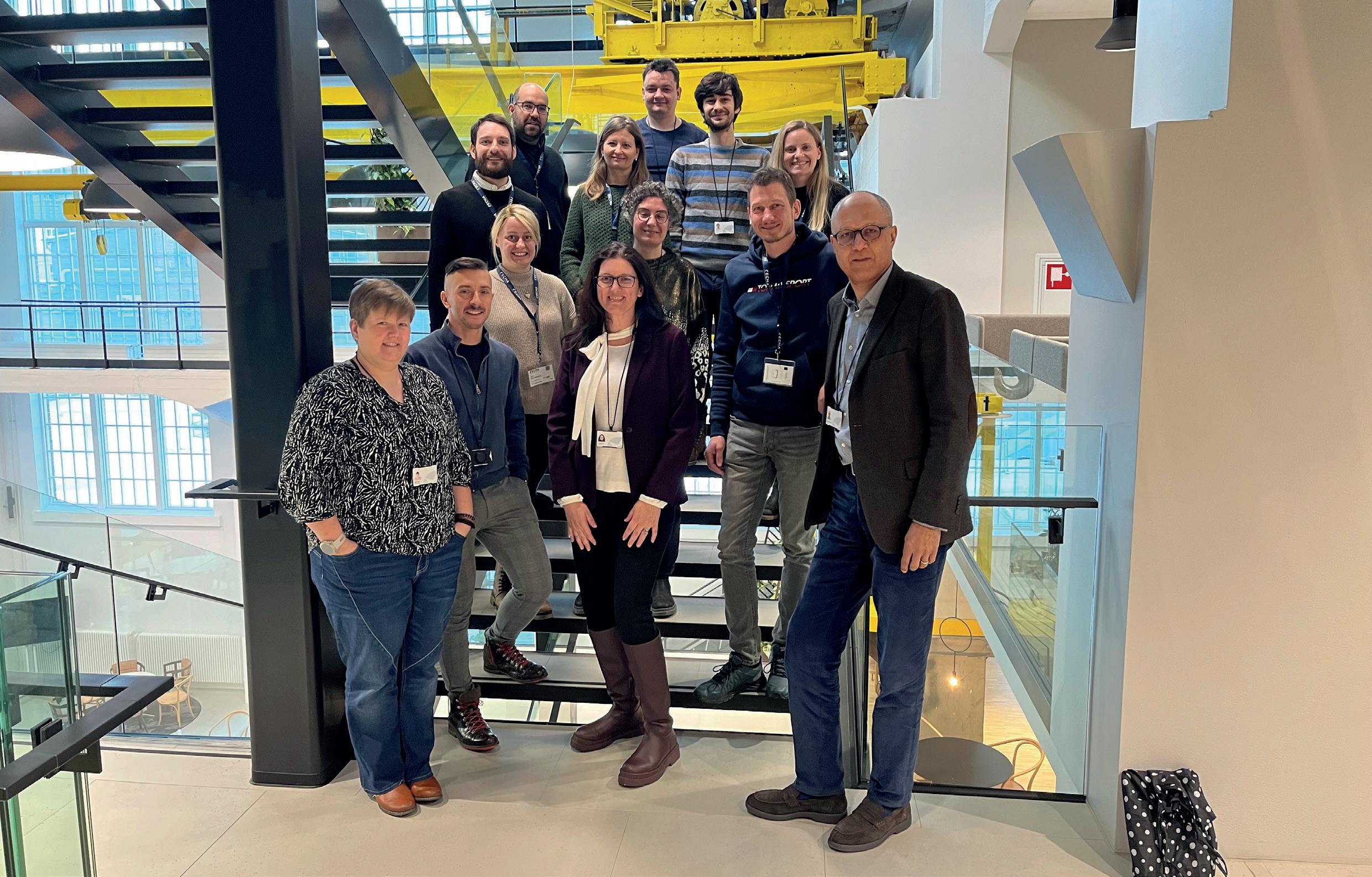

In January, BNN met with members of the ECHA nano team to discuss crucial domains in nanomaterials’ safety and sustainability. During a productive bilateral training session at the ECHA premises in Helsinki, our team from BNN provided insights derived from our involvement in EU-funded HORIZON Europe and H2020 research projects, with particular emphasis on Safe-and-Sustainable-by-Design of nanomaterials. In a dynamic discussion we addressed both opportunities and challenges.
Exchanges like these proactively foster approaches enabling the responsible development and use of nanotechnology. We are very much looking forward to further
establishing synergies with ECHA to advance nanosafety by overcoming regulatory challenges.
Contact
Susanne Resch
BioNanoNet Forschungsgesellschaft mbH susanne.resch@bnn.at www.bnn.at


SABYDOMA project has received funding from the European Union’s HORIZON 2020 research and innovation programme under grant agreement n° 862296.
SEE WEBSITE


DIAGONAL project has received funding from the European Union’s HORIZON 2020 research and innovation programme under grant agreement n° 953152.
SEE WEBSITE

HARMLESS project has received funding from the European Union’s HORIZON 2020 research and innovation programme under grant agreement n° 953183.
SEE WEBSITE


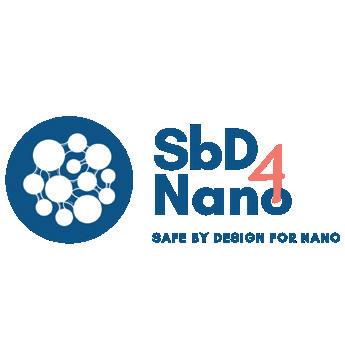
SbD4Nano project has received funding from the European Union’s HORIZON 2020 research and innovation programme under grant agreement n° 862195.
SEE WEBSITE



After participating for the second time in the world's largest nanotechnology event in Tokyo in January 2023, in the frame of NanoSyn4project we have been able to organize a booth for exhibitors from Austria at the nanotech 2024 with the support of the Federal Ministry for Climate Protection, Environment, Energy, Mobility, Innovation and Technology (BMK).
The nanotech2024 conference and exhibition was held at the East Halls & Conference Tower of Tokyo Big Sight in Japan from 31 January to 2 February 2024.
At the Austria booth, the research organizations Material Center Leoben, Silicon Austria Labs, BNN, nanoNET-Austria and the companies Stratec, Sunplugged and C-sense were able to present themselves.
The exhibition was a great success and the number of visitors increased from 31,150 in 2023 to 42,050 in 2024, an impressive recovery after the COVID-related dip.


Tsukasa Murota of Stratec said, “In Japan, there are many cases in which European culture and science and technology are used as models in various fields, and since it was showcase by a company from Austria, the visitors looked very interested in the displayed contents of our booth. Over 3 days, there were some leads who seemed strongly interested in our products and contact information was exchanged. I am looking forward to the next opportunity.”
Overall, the nanotech2024 was a great success and shall be conducted in 2025 again. This event is funded by the BMK project NanoSyn4.




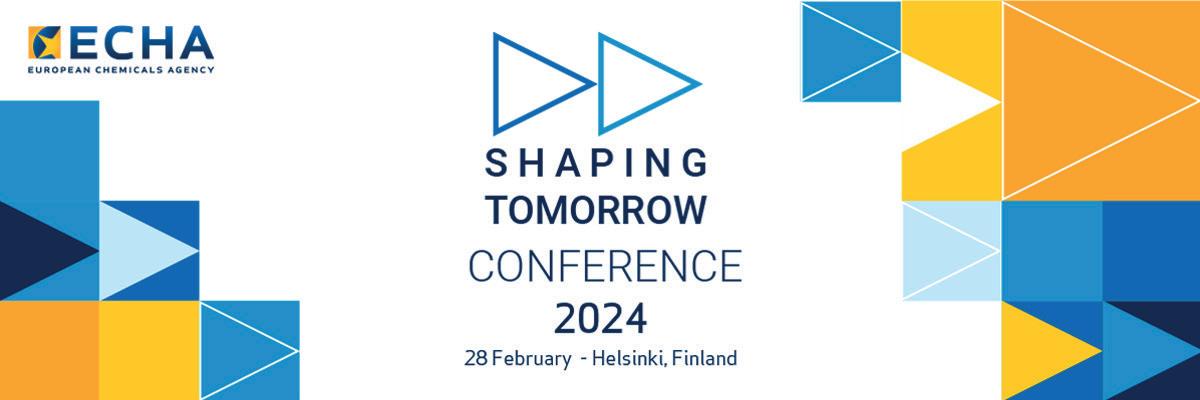
ECHA’s SHAPING TOMORROW CONFERENCE, held on 28 February 2024, drew nearly 3,000 participants from around the globe, convening both in person at ECHA's conference center in Helsinki, Finland, and online. The conference served as a central platform for experts to address the areas of science, collaboration and knowledge within the framework of EU chemical management, reflecting ECHA's overarching vision of "Chemical safety through science, collaboration, and knowledge".
A key theme highlighted throughout the event was the need for collaboration between different stakeholders, which is one of ECHA's key priorities for the future. This emphasis on inclusivity will continue to expand and encourage deeper engagement and collaboration. For example, one topic for collaboration between the scientific and the regulatory community will be on New Approach Methodologies (NAMs), where ECHA emphasized commitment to advancing these new methodologies for regulatory purposes.
At the same time, it was highlighted that transparent decision-making processes need to strengthen public trust, and communication
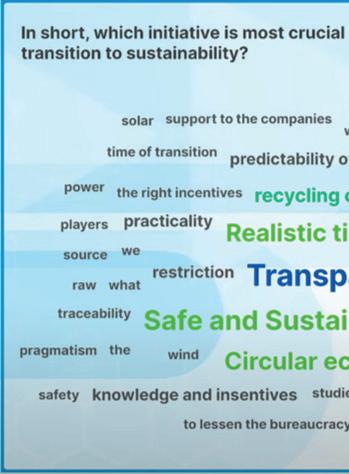
channels need to be optimized to increase outreach.
The conference provided a unique forum for participants to gain insights from high-level experts and strategic developments, and fostered interactive dialog through engaging discussions and Q&As. In one interactive question, it became clear that many participants consider ‘Safe-and-Sustainableby-Design’, next to ‘Transparency’, as one of the most crucial initiatives to support the chemical industry’s transition into a sustainable future.
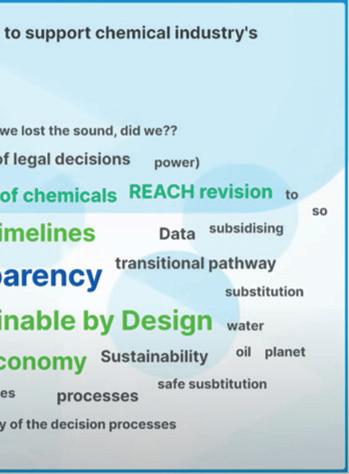 Susanne
Susanne

The Faculty of Technical Chemistry, TU Wien, hosted a transformative event on 18 January 2024 featuring guest speaker Rodrigo Lozano, a prominent expert in Organizational Sustainability, who delivered two lectures.
Professor Rodrigo Lozano is a renowned expert in Organizational Sustainability from the University of Gävle, Sweden. His lectures, tailored for both students and researchers, delved into cutting-edge topics in green
chemistry, providing valuable insights and perspectives.
During the first session, Professor Lozano presented an innovative case study from Serbia, showcasing collaborative business models in green and sustainable chemistry. The focus was on Chemical
Leasing, a service-oriented approach that shifts from profit- driven motives to valueadded services. The case study highlighted successful implementation on a beverage producer’s packaging line, resulting in reduced chemical consumption, improved safety, and economic savings.
In the second session, the audience delved into the intricate world of Circular Economy decision-making. Professor Lozano introduced a decision-making tree, offering a strategic guide for researchers and industry professionals to engage efficiently with Chemical Leasing. This session aimed to bridge the gap between economic considerations, environmental impacts, and material recovery, providing a comprehensive framework for decision-making.
The event facilitated networking opportunities, allowing students and young researchers to interact with Professor Lozano and seek further insights into the dynamic field of green chemistry.
For more information, please contact: greenchem@tuwien.ac.at
Contact
Bettina Mihalyi-Schneider Technische Universität Wien bettina.mihalyi@tuwien.ac.at www.tuwien.at www.suschem.at
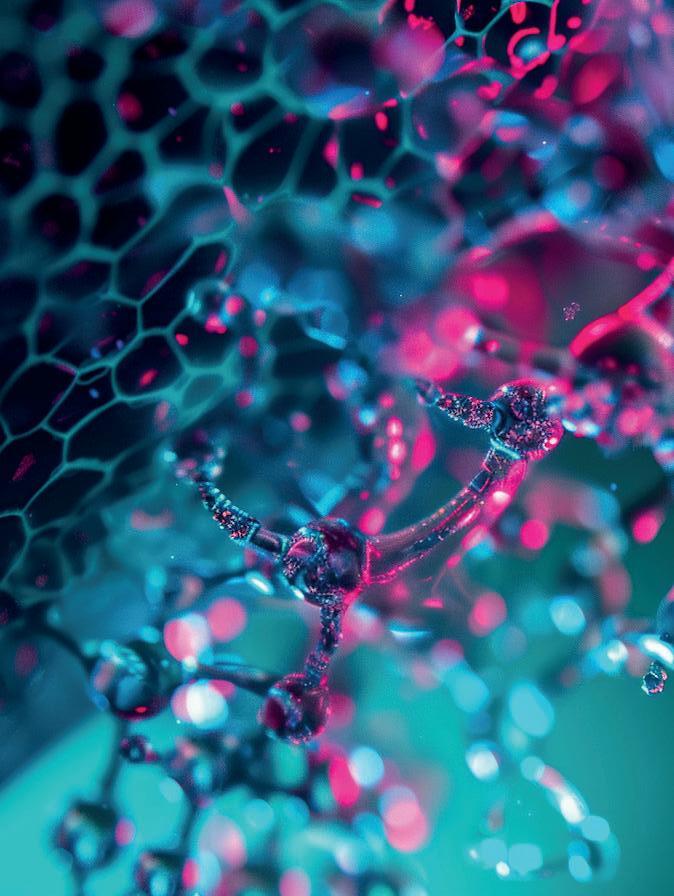
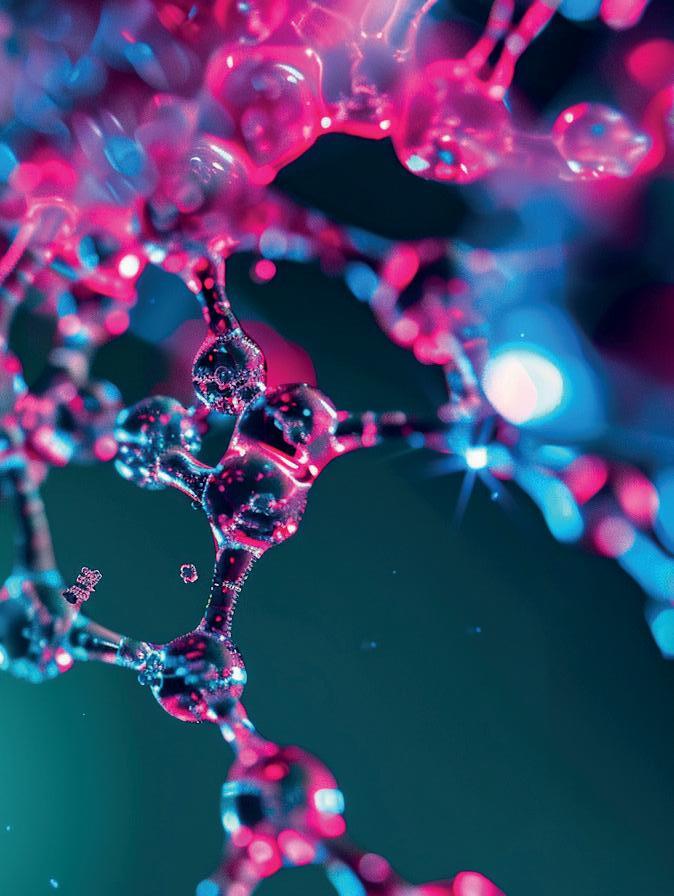
The first summit its kind, ANTHOS’24“Advanced (Nano)Materials and Technologies: science, research & innovation for safety and sustainability” - took place from 4 to 7 March 2024 at the TWELVE Conference Center in Vienna and was accompanied by satellite events before and after the core program. The exciting summit attracted 163 people from research organizations, SMEs and large industries, governments and policy, and other organizations active and interested in safety and sustainability of advanced materials, nanomaterials, and related processes and products.
ANTHOS’24 was initiated, conceptualized and organized by BNN to promote advancements in technological innovation & research results on Safe-by-Design (SbD) for advanced (nano) materials and beyond. The event served as a platform for bringing together leading experts in Safe-by-Design (SbD) and Safeand-Sustainable-by-Design (SSbD), including partners active in projects funded under the frame of H2020 and Horizon Europe. Notably, representatives of key organizations and international stakeholder groups (European Commission, OECD, EFSA, ECHA, National Ministries, Industry), as well as relevant associations and initiatives actively contributed to the event. ANTHOS'24 provided the ideal stage to disseminate results obtained

in projects addressing “ Safe by design, from science to regulation: metrics and main sectors ” (NMBP-15) and “ Safe by design, from science to regulation: multi- component nanomaterials ” (NMBP-16), and dive deeper and discuss overarching topics of SbD and SSbD. These projects are at the forefront of developing tools and methods that embody the concept of SSbD. This innovative approach ensures that safety and sustainability considerations are woven into the early phases of nanomaterial innovation. By doing so, these projects shall prevent late development failures and also pave the way for a seamless transition to the market.
The BNN event was also supported by the EU


NanoSafety Cluster, and the sister projects’ collaboration of the NMBP-15 projects ASINA, SAbyNA, SABYDOMA, SbD4Nano and NMBP-16 projects DIAGONAL, HARMLESS, SUNSHINE, as well as IRISS and PARC.
On Monday, 4 March, the BioNanoNet Association’s General Assembly brought together its members to discuss latest developments of the Association, followed by the BNN Networking Event which kicked off the open event to all participants. The networking started with short presentations of the recently launched Horizon Europe

projects SSbD4Chem, PINK, CHIASMA and INSIGHT, in which BioNanoNet members play key roles. Before we continued with socializing, the Austrian Research Promotion Agency presented the open EUREKA call. Finally, BNN gave an overview on its expertise (which are assets for any R&D&I project) in SSbD-implementation and how BNN can support your idea to reach the market with our Innovation Support, including our competences in regulatory advice. The closing of the day was marked by delicious traditional Austrian food in the Luftburg, Austria’s largest fully certified organic restaurant situated in Vienna’s well-known leisure park Prater.
Pictures of ANTHOS'24

The second day of ANTHOS’24, Tuesday, 5 March, revolved around “Science-driven methods and tools for the for the transformation of Safe-by-Design” . In a series of talks structured around SbD of processes and materials – ranging from nanomaterials to advanced materials – legal aspects were also addressed and critically discussed. A highlight of Tuesday were the presentations of successful case studies of SbD in action from the NMBP15 projects (ASINA, SABDYDOMA, SAbyNA, SbD4Nano) by companies (Applied Nanoparticles, Creative Nano, AVANZARE, UNI).
In the last session Andreas Falk, CEO of BNN and member of the coordination team of the EU NanoSafety Cluster (NSC), moderated a roundtable discussion on “Lessons learned & future impact of the developed methods and tools” hosting experts from the NMBP15 projects, the OECD WPMN, the German Ministry of Environment, and the European Commission Joint Research Centre. They discussed and elaborated on different views, advantages and pitfalls of the newly developed tools and methods. In their discussion it
became clear that from the legal perspective there is not yet a solid trust and regulatory acceptance of New Approach Methodologies (NAMs), such as developed in the presented projects, and that there still is a call for further developing actual test guidelines to make them applicable for advanced (nano)materials. Additionally, concerns about the possibilities and dangers of read-across over different materials was a central topic. While the scientific side agreed to the need to properly validate NAMs and be cautious when it comes to read-across, the potential plurality of such approaches was discussed in the context

of using different approaches to advance the same idea. Importantly, it was acknowledged that a major necessity is to provide highquality data, ideally stemming from robust methods to the developed models to allow them to predict outcomes reliably. Ultimately, reliable models are needed to further advance in their TRLs and ensure their acceptance not only among the community, but also society and regulators. Harmonization of tools and methodological approaches will pave the way for this, while efficient and accessible data storage and constant dissemination of scientific outcomes are key goals.
All in all, it was agreed that the collaborative nature of these projects will be the key to advancing the idea of a safer and more sustainable future and successfully translate it to industry, providing an incentive for it to be implemented. This can be achieved by successful knowledge transfer and training among the people involved within the topic, and also bringing the knowledge to higher hierarchical levels and take company leaders into the discourse and holding them accountable.

The fantastic day culminated in the rooftop event location ThirtyFive with a breathtaking view of the city’s lights, delicious food from live cooking stations, lively conversations and great live music, which even sparked some dancing!






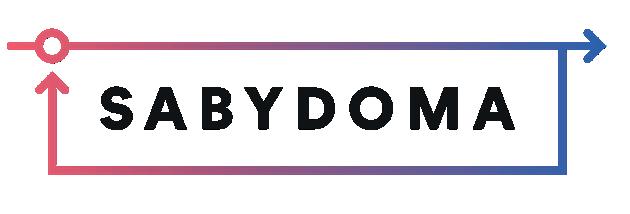

These projects have received funding from the European Union’s Horizon 2020 research and innovation programme under grant agreements no 862444 (ASINA), 862419 (SAbyNA), 862296 (SABYDOMA), 862195 (SbD4Nano), 953152 (DIAGONAL), 953183 (HARMLESS), 952924 (SUNSHINE), and from the European Union’s HORIZON EUROPE research and innovation programme under grant agreement no 101057014 (PARC) and 101058245 (IRISS). UK participants in Project IRISS are supported by UKRI grant 10038816. CH participants in Project IRISS receive funding from the Swiss State Secretariat for Education, Research, and Innovation (SERI).
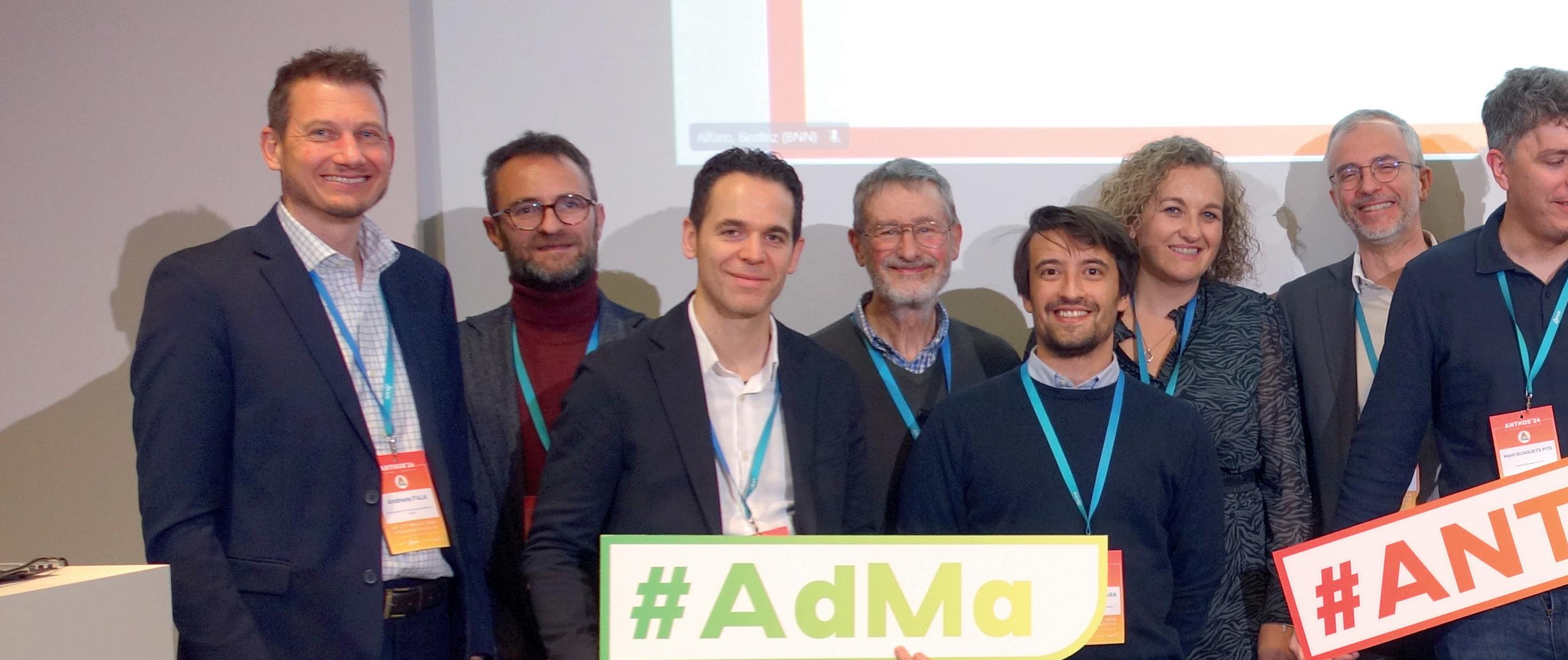


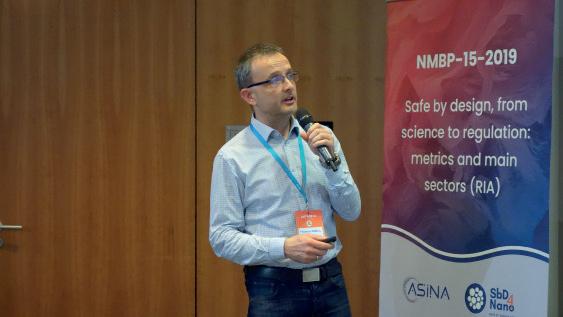


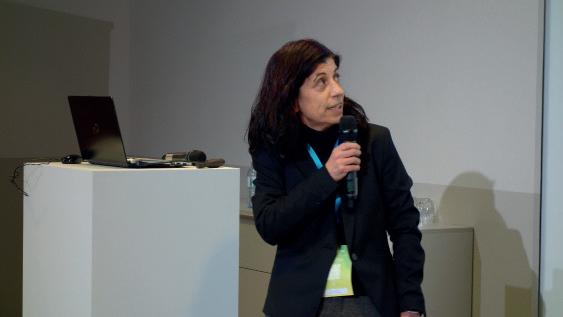
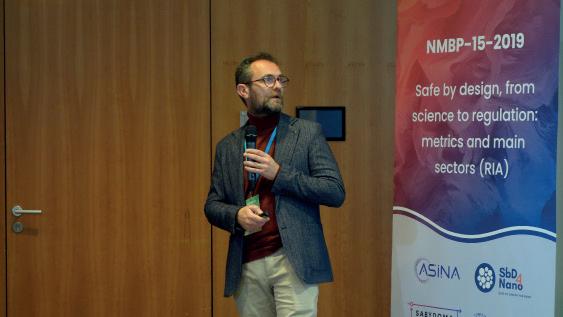




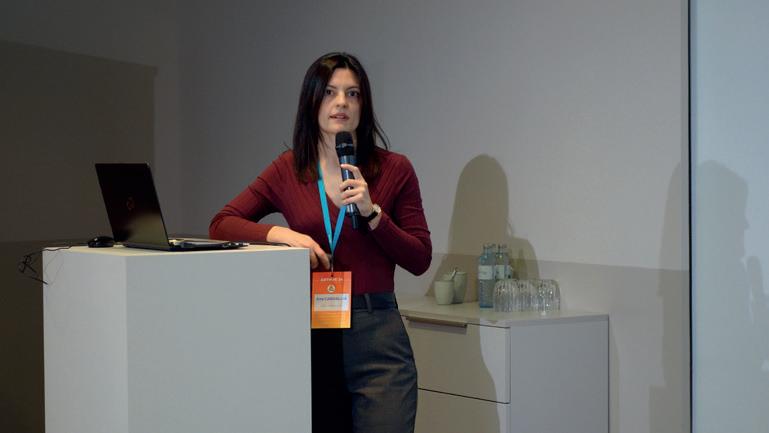
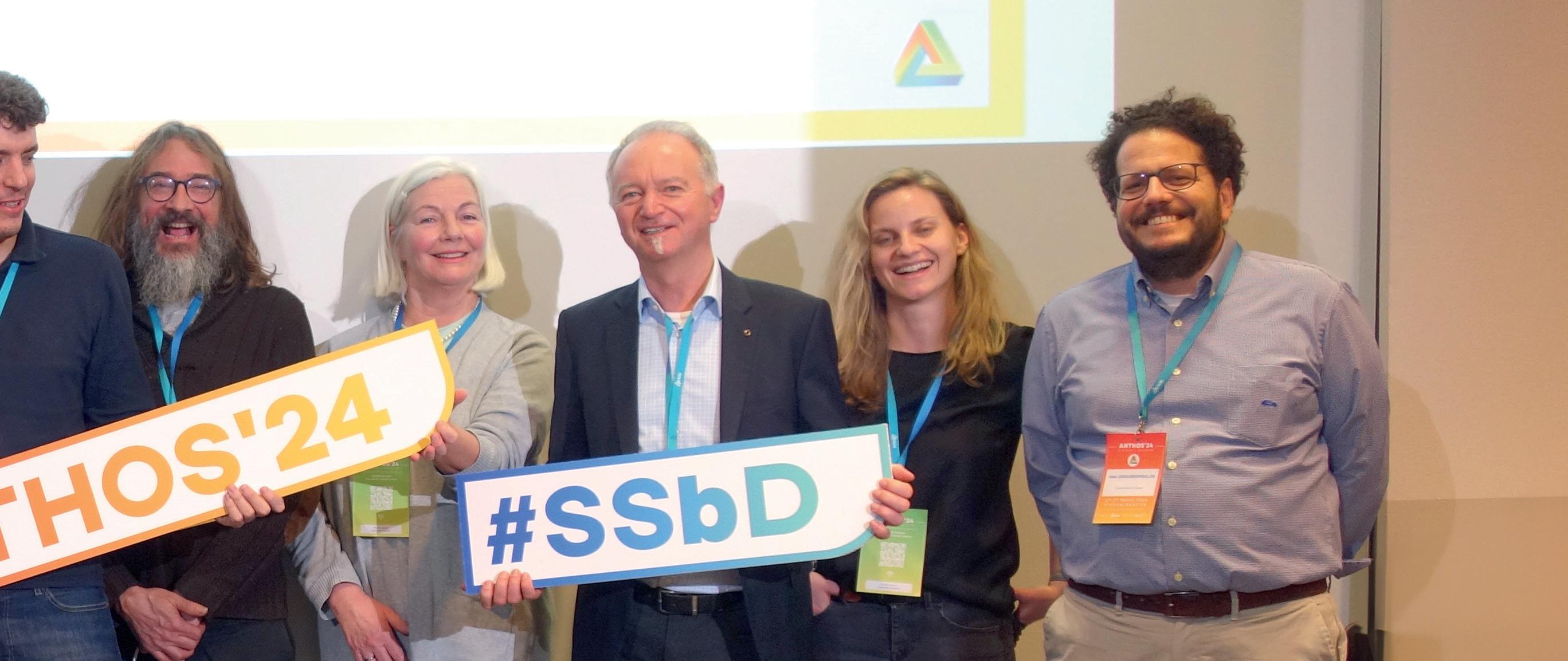
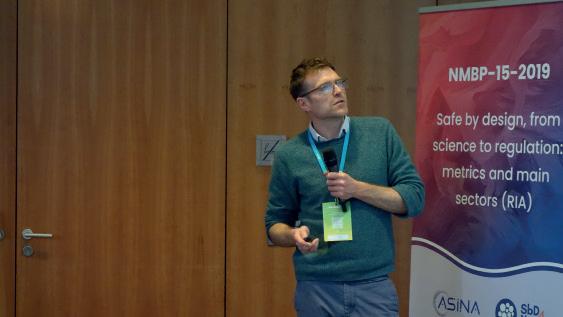




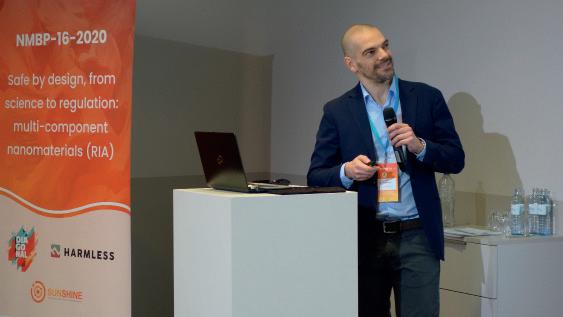

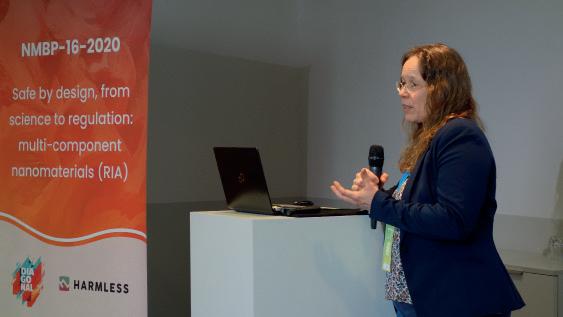
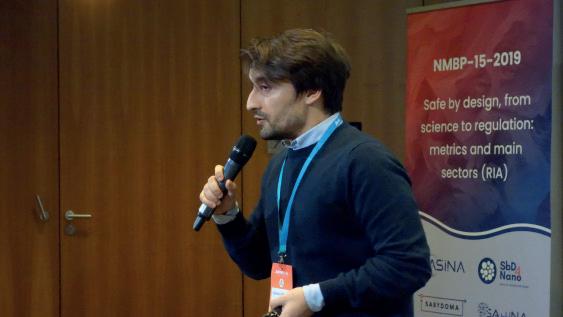




The second half of ANTHOS'24 was marked by elaborations on projects (SUNSHINE, DIAGONAL, HARMLESS, PARC, IRISS) on SSbD in full action focusing on “Translation and implementation of SSbD: Towards an innovation-driven ecosystem” on Wednesday, 6 March. Like the previous day, participants got to enjoy exciting talks, focusing more on SSbD, its translation and valorization and application to multicomponent nanomaterials. Additionally, decision support systems, industrial implementation of SSbD and knowledge sharing within the community were hot topics of the day.
The final session of the day was a roundtable discussion, moderated by Monique Groenewold from RIVM and member of the NSC coordination team, on “Creating long-term impact for society considering multistakeholder needs”. The discussion was launched with a topic already discussed at the previous roundtable:
the incentive for industry to implement SSbD and ways to improve regulators’ trust in novel tools. Approaches mentioned included simple-to-use tools, as well as the implementation of consultancy services to make SSbD more feasible. Especially SMEs are often lacking the expertise and resources to investigate and combine safety and sustainability, while they are the backbone of innovation in the European field. The roundtable participants therefore discussed the need for “simplexity” of SSbD and related tools, as simple as possible, while remaining as complex as needed, which can be achieved by transparency and harmonization. While the use of tools was also heavily discussed at the roundtable, it was made clear that it is still experts working on innovation and its governance. On the other hand, it was brought up that tools can be sophisticated and should not be oversimplified, but accessible for the end user. An important task in the years to come will be to shape the future experts and challenge students early on in their careers

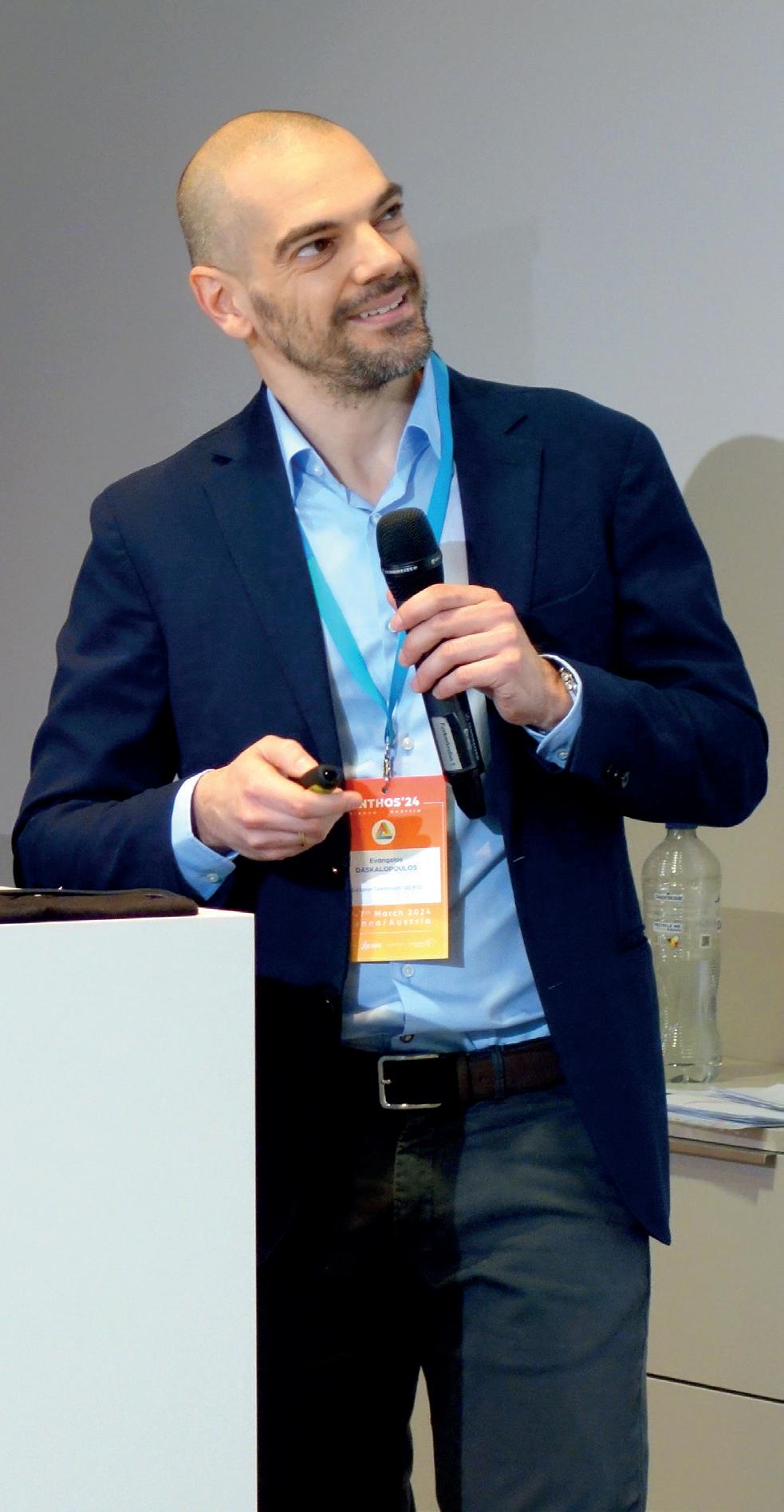
during their master´s and PhD programs to ensure their understanding of not only tools and approaches within a narrow field, but allow for translational and trans-sectional discourse, which will ultimately provide an entirely new generation of experts. An analogy with which the roundtable was closed was that SSbD is like a forest and the available and developed tools are the trees within the forest.
Finally, the event was finalized by closing statements of the conference chair Andreas Falk, recapitulating highlights of ANTHOS'24 before the participants got to enjoy a final dinner together!

ANTHOS’24 was concluded with the Workshop “A stakeholder’s perspective of Safe-and-Sustainable-by-Design – a bigger picture!” organized by SABYDOMA, the SABYDOMA Technology Showcase, and an Expert Workshop on "Public Perceptions of Nanoparticles in Cosmetics: Challenges and Opportunities" organized by DIAGONAL.
In the morning of 7 March, SABYDOMA organized a followup SSbD workshop to the one previously to the one previously held in February 2022, to explore what progress has been made on SSbD since then. The workshop, entitled “A stakeholder’s perspective of Safe-and-Sustainable-by-Design – a bigger picture!” , highlighted the past four years of research and dissemination on the SSbD approach, with the contribution of stakeholders from academia (UoB), European Commission, policy makers (Cefic, ChemSec), industry (APPNPS, NIA, TEMASOL) and relevant ongoing projects (PARC), who discussed the current status and understanding of the SSbD approach.
The workshop started with a presentation on SABYDOMA’s legal paper covering the content and findings of the two legal workshops organized in January 2021 and June 2023, and was followed by a roundtable discussion with panelists answering questions on the implementation, challenges and potential developments of the SSbD approach since the European Commission recommendation was published on 8 December 2022 and in light of
the ongoing scientific research.
After that, SABYDOMA organized a Technology Showcase where the four years of research performed in the SABYDOMA project were highlighted. Participants were able to observe a demonstrator showing the coupling of a nanoparticle production line with a cell line screening platform, which were both developed during the SABYDOMA project. This demonstrator simulated the production of nanoparticles in a compact microfluidic set-up and their transfer to a screening module with integrated optical and electrical sensing. The module can be used to investigate the
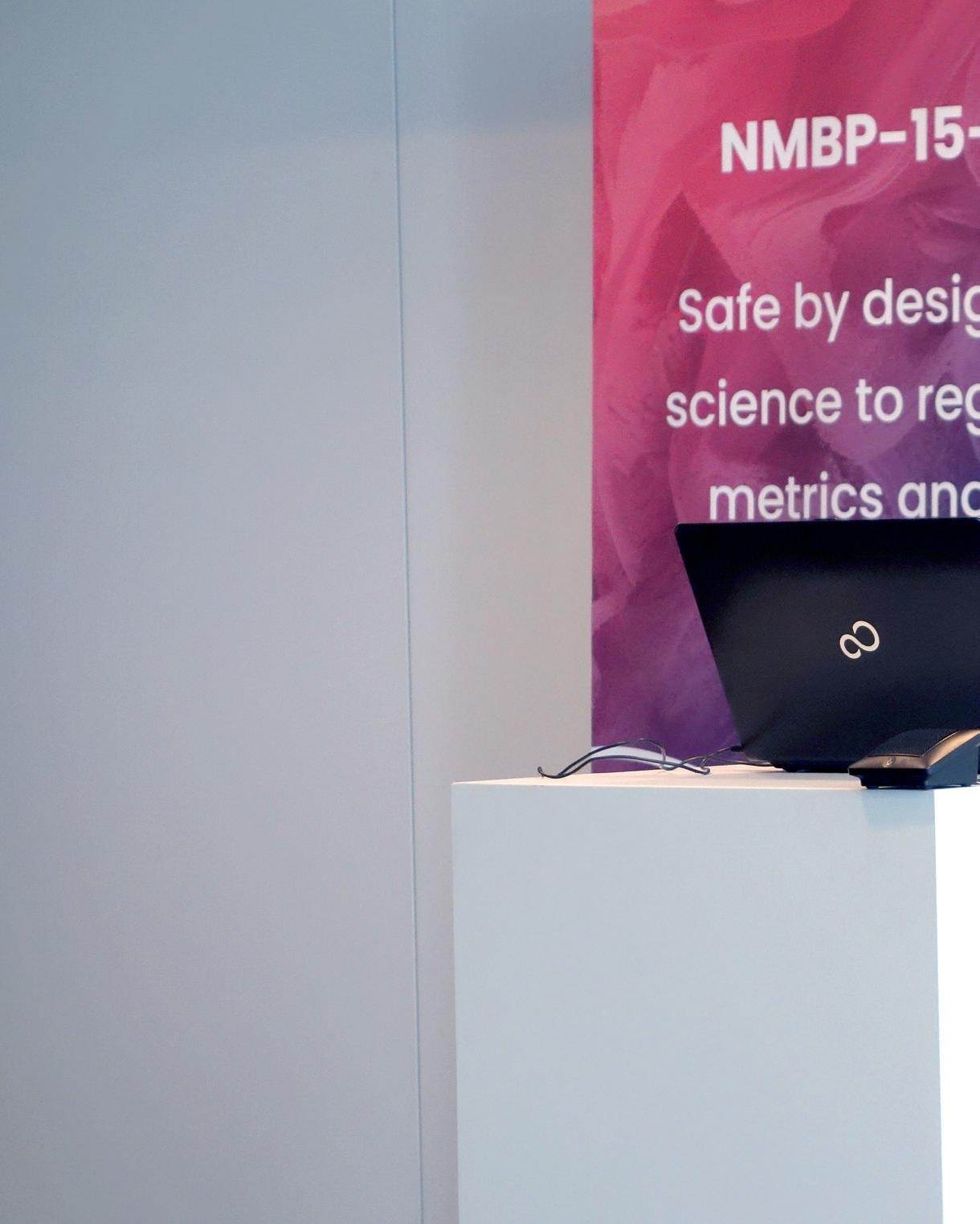
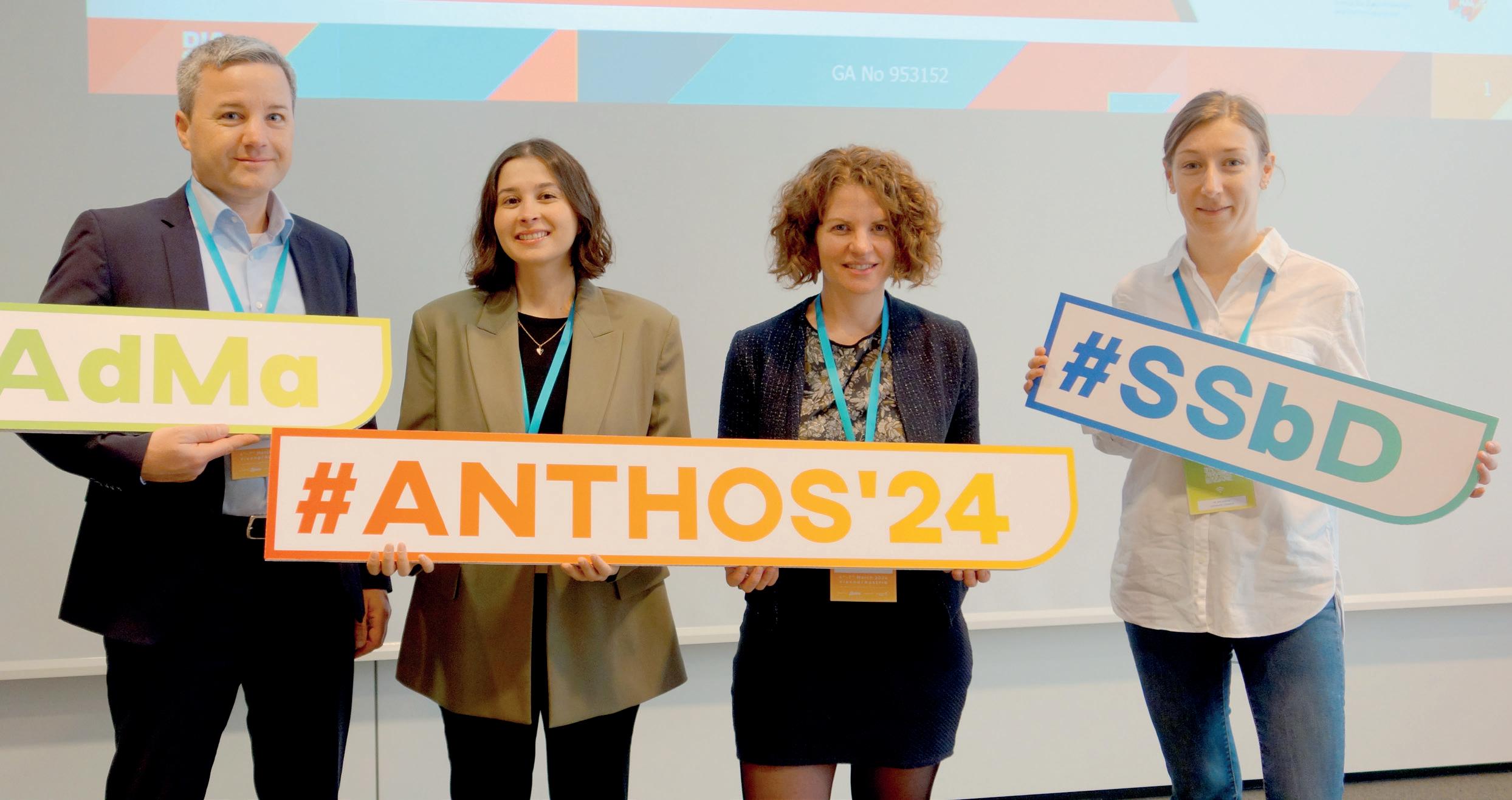
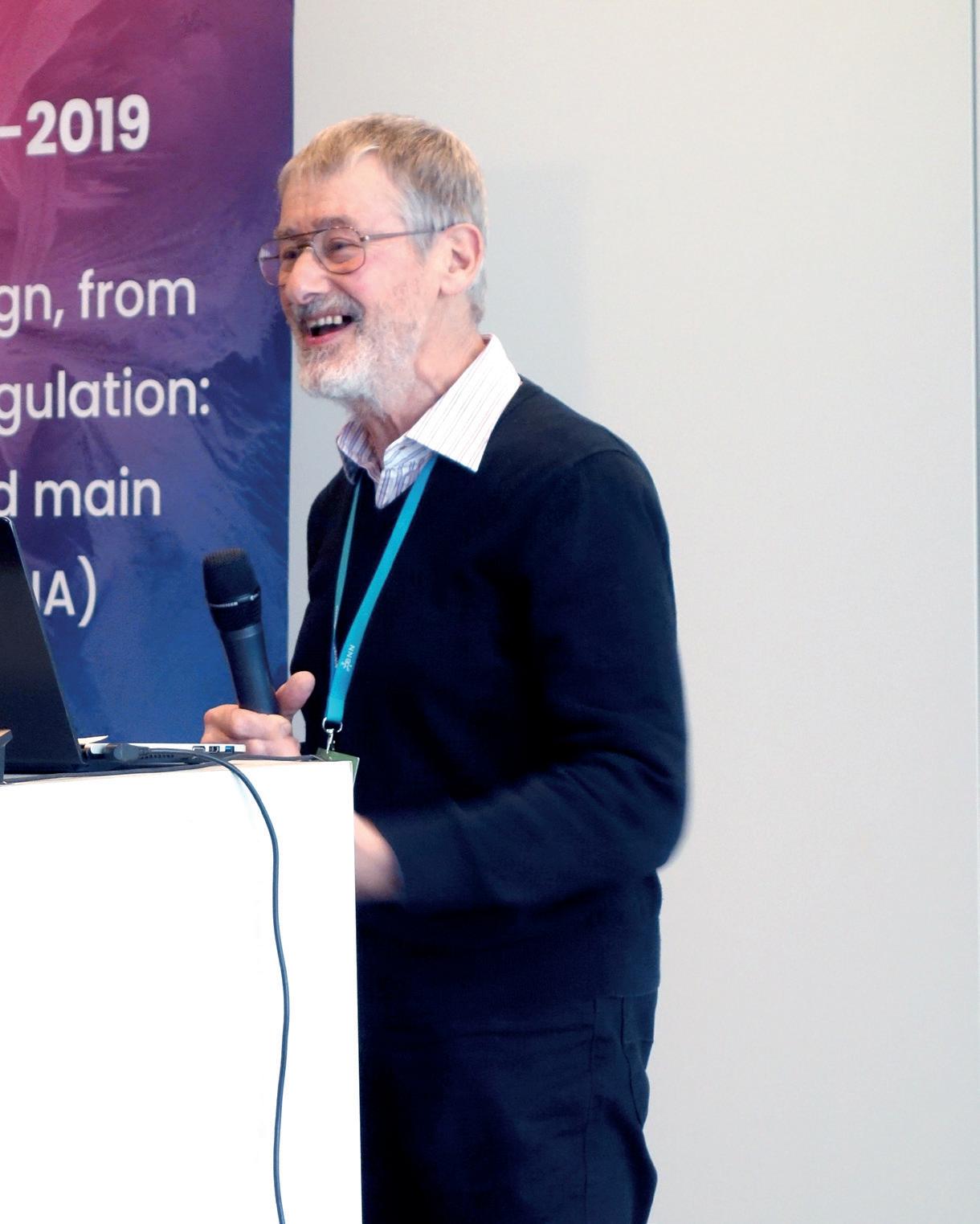
toxicological effect of the nanoparticles on living biological cells.
In parallel with the SABYDOMA Technology Showcase , the DIAGONAL project organized an interactive Expert Workshop on Public Perceptions of Nanoparticles in Sunscreens: Challenges and Opportunities. See our article on the workshop further in this issue!
We are confident that ANTHOS'24 successfully presented cutting-edge research and advances in the field of Safe-and-Sustainableby-Design and advanced materials, and also brought together a lively crowd of highly motivated experts who are already eagerly planning their next steps, potentially with some newly found collaboration partners!
If you are interested in attending the next edition of ANTHOS, just follow BNN’s LinkedIn and Twitter (X) channels and consider joining the BioNanoNet Association .
CONTRIBUT ION FROM RECENDT – RESEARCH CENTER FOR NON-DESTRUCTIVE TESTING GMBH

From 4-6 March, Robert Holzer (RECENDT) attended ANTHOS’24 – following the discussions (on stage and in the breaks) from a quite specific viewpoint: how and when will the “classic” Process Analytical Technology (PAT) concepts be applied in Nanomaterial and Advanced Material production to boost and foster sustainability?
RECENDT has been driving the Austrian research initiative PAC for Process-Analytics in Chemistry for many years, is part of the SusChem-AT board, and is actively contributing this focus to the project PHOENIX-OITB. PHOENIX is an H2020 Open Innovation Test Bed (OITB), providing a Single Entry Point to facilities, technologies, services and expertise for all technology transfer aspects related to nanopharmaceutical development, from characterization, testing, verification up to scale up, GMP (Good Manufacturing Practice) compliant manufacturing and regulatory guidance.
the durability of the materials produced, and many show strong overlaps with safety issues. Important further sustainability aspects to be addressed when designing production processes include the consumption of raw materials and of energy and optimization of processes to generate the best possible yield and highest quality.
RECENDT wants to support this development towards a PAT-based optimization of process sustainability.
Any detailed characterization of nanoparticles requires extremely sophisticated analytical techniques and equipment. During ANTHOS’24, it became clear to RECENDT that the time seems to be right to bring the analytical approaches from the off-line characterization of particles to the in-line / on-line PAT. Novel real-time characterization technologies for nanoparticle production processes are available (see the H2020 project “NanoPAT ”) and waiting for a broad acceptance in industrial implementation and use.
ANTHOS’24 looked at the concepts of Safeby-Design (SbD) and Safe-and-Sustainableby-Design (SSbD). The discussions showed that various dimensions of sustainability of materials focus on the raw materials used or
As a steady advocate of the PAT-idea, RECENDT wants to support this development towards a PAT-based optimization of process sustainability and offers to contribute with their own expertise and the available networks in the Austrian PAT community and the networks from the running national and
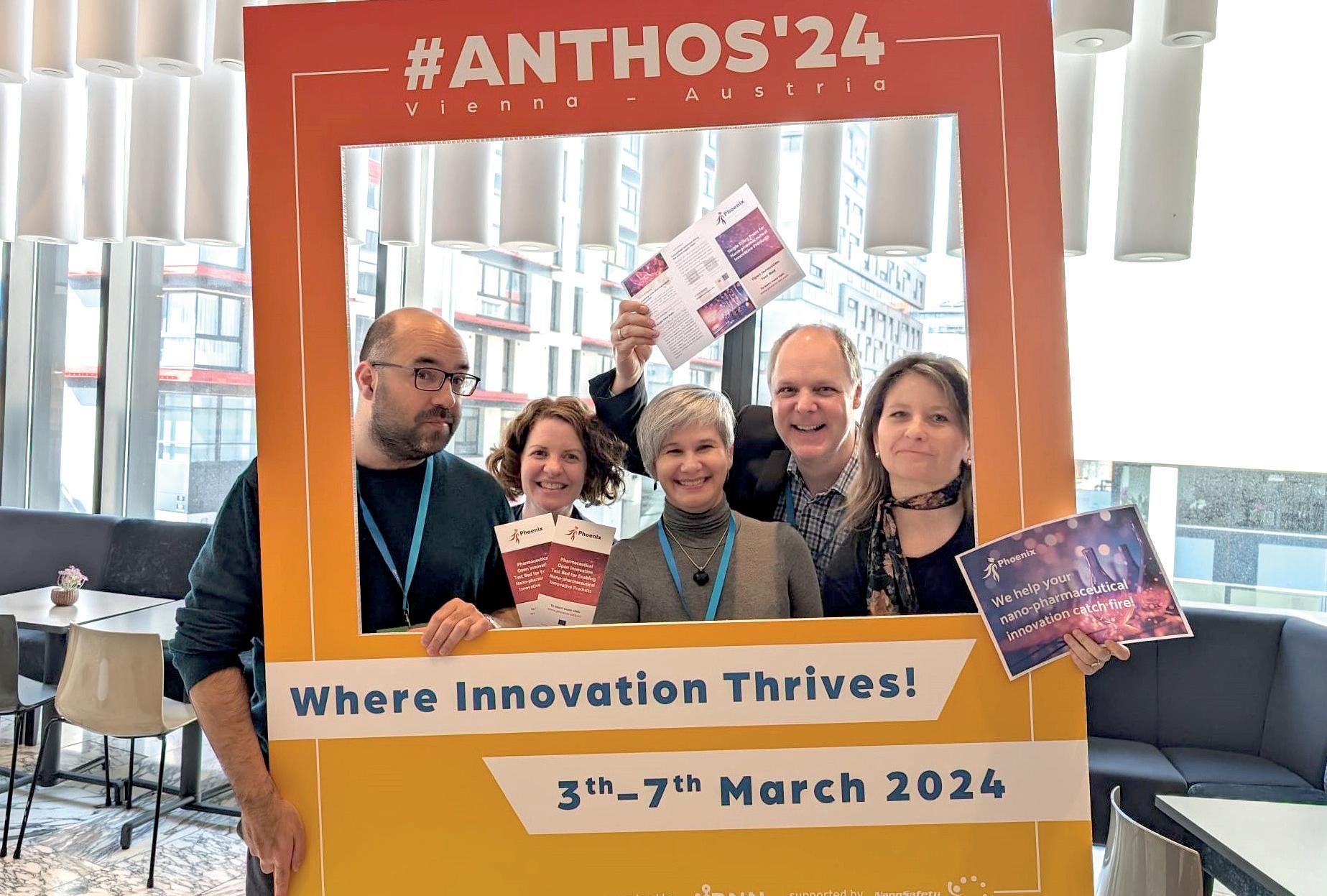
European projects. There, RECENDT is active in the application of spectroscopic PAT solutions and in highest resolution hyper-spectral imaging for materials characterization. Let’s focus all this towards a PAT-supported multidimensional SSbD future.
Contact
Robert Holzer
RECENDT – Research Center for Non-Destructive Testing GmbH
robert.holzer@recendt.at www.recendt.at

We closed out ANTHOS’24 on 7 March with an interactive workshop bringing together diverse perspectives on a highly relevant topic. The Expert Workshop on Public Perceptions of Nanoparticles in Sunscreens: Challenges and Opportunities was hosted by the Institut für ZukunftsEnergie- und Stoffstromsysteme (IZES gGmbH), a partner in the H2020 project DIAGONAL. IZES gGmbH promotes environmental and climate protection, particularly through application-oriented research and development in the field of future technologies and future markets for energy and material flow systems. The Department of Environmental Psychology researches the psychological, social and behavioral components of the energy and technology system with the aim of developing new approaches and recommendations for sustainable and socially viable transformation.
Within DIAGONAL, IZES assesses the social sustainability of multicomponent nanomaterials (MCNMs) and High-Aspect Ratio Nanoparticles (HARNs). They have been performing research on the depiction of nanomaterials in the media (newspapers, magazines, YouTube), conducting pedestrian surveys on public perception, and now wanted
to bring the discussion to the experts. Irmak Karakislak and Jan Hildebrand from IZES guided us through this workshop.
The workshop in Vienna gathered participants from scientific research, SMEs, EU institutions (the European Commission’s Joint Research Centre), a national authority (the Austrian Federal Ministry for Climate Action, Environment, Energy, Mobility, Innovation and Technology) and civil society (e.g. a consumer protection NGO).
Together, the group discussed the main obstacles that nanomaterials face in pub -

lic perception, issues of public trust, such as lack of nuanced information regarding nanomaterials, access to misinformation, and general skepticism of new technologies. We then looked at indicators of trust, who are recipients of public trust, social and cultural factors shaping trust, and processes in which trust can be shaped.
Next, we looked at different actor groups and rated how much we believe each is trusted by the public. This generated a lot of discussion, as many see the population becoming more polarized – e.g. some groups having high trust in scientists or the media while some having very low trust. Finally, we brainstormed several action plans for informing the public and increasing their trust in nanomaterials. These included creating more scientific communication campaigns for a variety of audiences, organizing citizen science initiatives and more.
Overall, the lively discussion and diverse viewpoints gave us a lot of food for thought as we

continuously strive to reach the public with our research outcomes. A huge thank you to IZES, DIAGONAL, and all the participants!
Role of BNN in Diagonal project:
Mainstream Sustainability into Safety-byDesign, Liaison management, Stakeholder engagement, Communication & Dissemination.


www.diagonalproject.eu

DIAGONAL project has received funding from the European Union’s HORIZON 2020 research and innovation programme under grant agreement n° 953152

Carlos Rumbo Lorenzo is Head of the Toxicology Group at ICCRAM and coordinator of the H2020 project DIAGONAL.
At ANTHOS, he presented one of the DIAGONAL demonstrators “Metallic HARNs for printed electronics: Ag nanowires" and participated in the panel “Creating long-term impact for society considering multistakeholder needs”. We sat down after the conference to take a look at the bigger picture.
DIAGONAL is one of the 3 NMBP-16 projects funded by the EU to bring new methodologies to guarantee long-term nanosafety, focusing on multicomponent nanomaterials and High Aspect Ratio Nanoparticles. Why are MCNMs and HARNs a priority for the EC?
MCNMs and HARNs are considered part of the Key Enabling Technologies, materials that have very promising properties and can support disruptive changes, transforming our economy and generating new markets and key players. Research and innovation in this field is actively promoted by the industry; however, the risks related to these innovations are yet unknown. DIAGONAL’s aim is to gene rate new knowledge on these materials to be able to support the Safe-and-Sustainable-by-Design
development of new chemicals meeting the MCNMs and HARNs characteristics. This knowledge is being developed through experimental studies that provide evidence and data to develop in silico tools, able to predict the behaviour of novel materials in terms of toxicology but also regarding their sustainability (from the environmental, economic and social aspects). Being able to support decision making at the industrial level, providing clear information on the best strategies to develop Safe-and-Sustainableby-Design innovations is the final goal of this project, in line with the EC efforts.
At BNN, we believe that employing the Safeand-Sustainable-by-Design (SSbD) Framework from the start of a project can lead to cost and time savings later on, when finding out that a new material is unsafe for humans or the environment. As a researcher, what is your take on SSbD?
I think the application of the SSbD Framework at early stages of a material development is a very useful tool. Anticipating possible hazards of a novel technology definitely leads to better decision making, saving time and money, and avoiding wrong choices in the process.
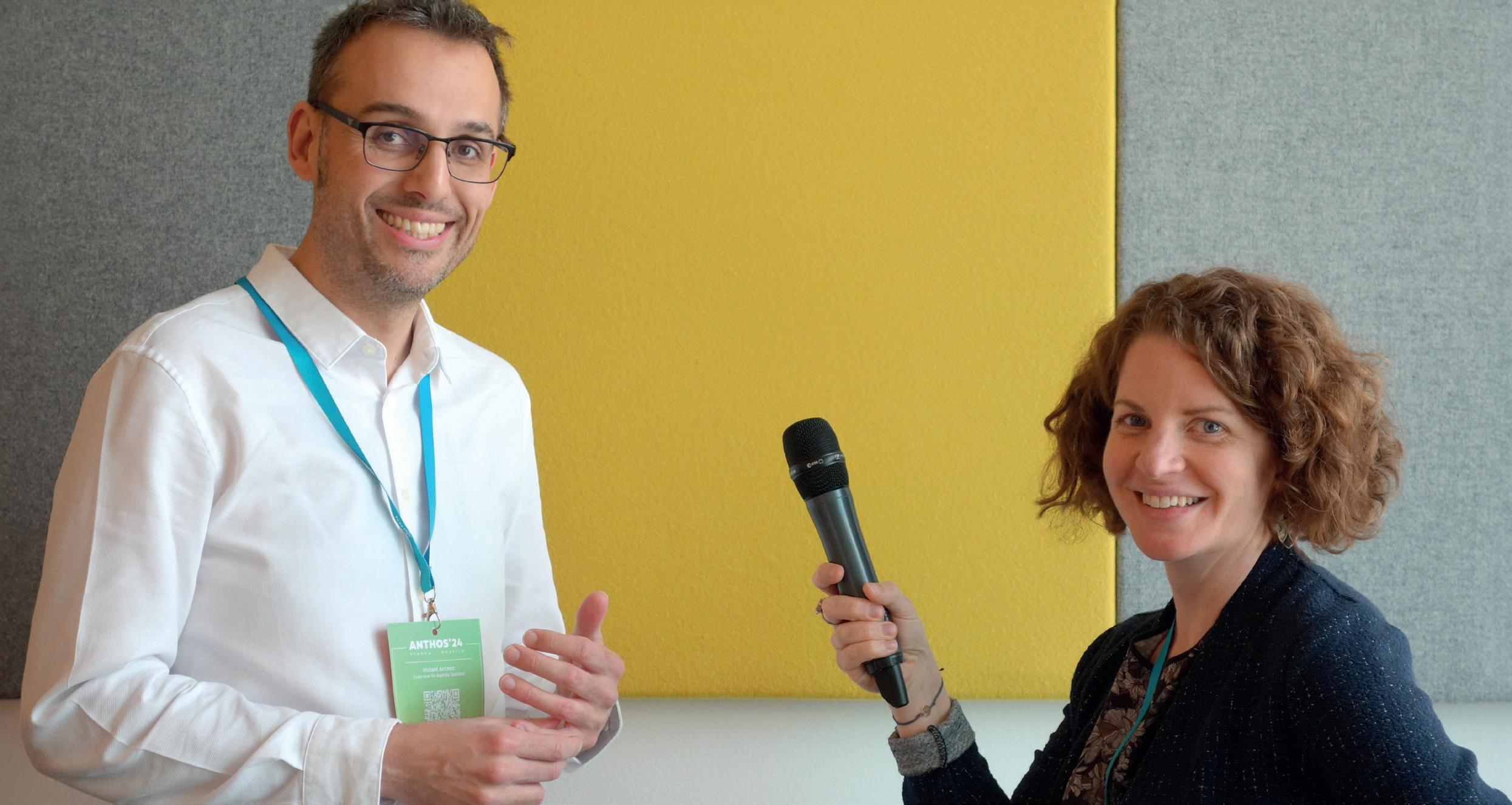
Although the SSbD Framework is under development, and it is currently being tested by the nanosafety community, it is a crucial tool to assess the industry and allow a reliable industrial growth. The life- cycle approach allows the user to have a global picture of the behaviour of the products and processes involved along the whole life cycle, which is aligned with the planetary boundaries approach. Also, the theoretical approach has a significant presence in this framework, which allows us to evaluate different scenarios before carrying out expensive experimental trials. This paradigm will certainly foster a quicker and more reliable technology development. Some improvement is needed but I am convinced that with all the contributions from the scientific and industrial community, the SSbD concept will position itself as a crucial tool for the R&D and technology developers to ensure the safety and sustainability of novel materials.
DIAGONAL is developing a Decision Support Tool for MCNMs and HARNs. Explain what you think the impact of this tool might be.
The idea is to allow different stakeholders who want to create a nanoparticle for a specific use to preliminarily investigate if there is any hazard concern along the lifecycle of the novel material. The tool would need some basic information from the user to provide recommendations on how to produce these nanoparticles in a safe and sustainable way. The models that will be included in the tool and the library of data and strategies will support decision making if there is any risk associated to the nanoparticle itself or its upstream and downstream related processes.
This tool is still under development, and the idea is that it will be updated thanks to its open approach, with the collaboration of research data increasing the library of nanoparticles and their properties, broadening the accuracy and scope of the system.
Using the tool at early stages of the innovation process will save time and money to ensure that a nanomaterial can be commercialized avoiding safety issues.
With all the safety and sustainability testing needed, at the end of the day, what makes production of nanoparticles and nanomaterials worth it?
If it is possible to create nanoparticles which are safe, have no environmental concerns, and are sustainable, avoiding contamination and keeping costs as low as possible and offer unique use characteristics, what can be better than that?
Contact Carlos Rumbo Lorenzo ICCRAM – University of Burgos crumbo@ubu.es www.ubu.es/iccram


DIAGONAL project has received funding from the European Union’s HORIZON 2020 research and innovation programme under grant agreement n° 953152. SEE
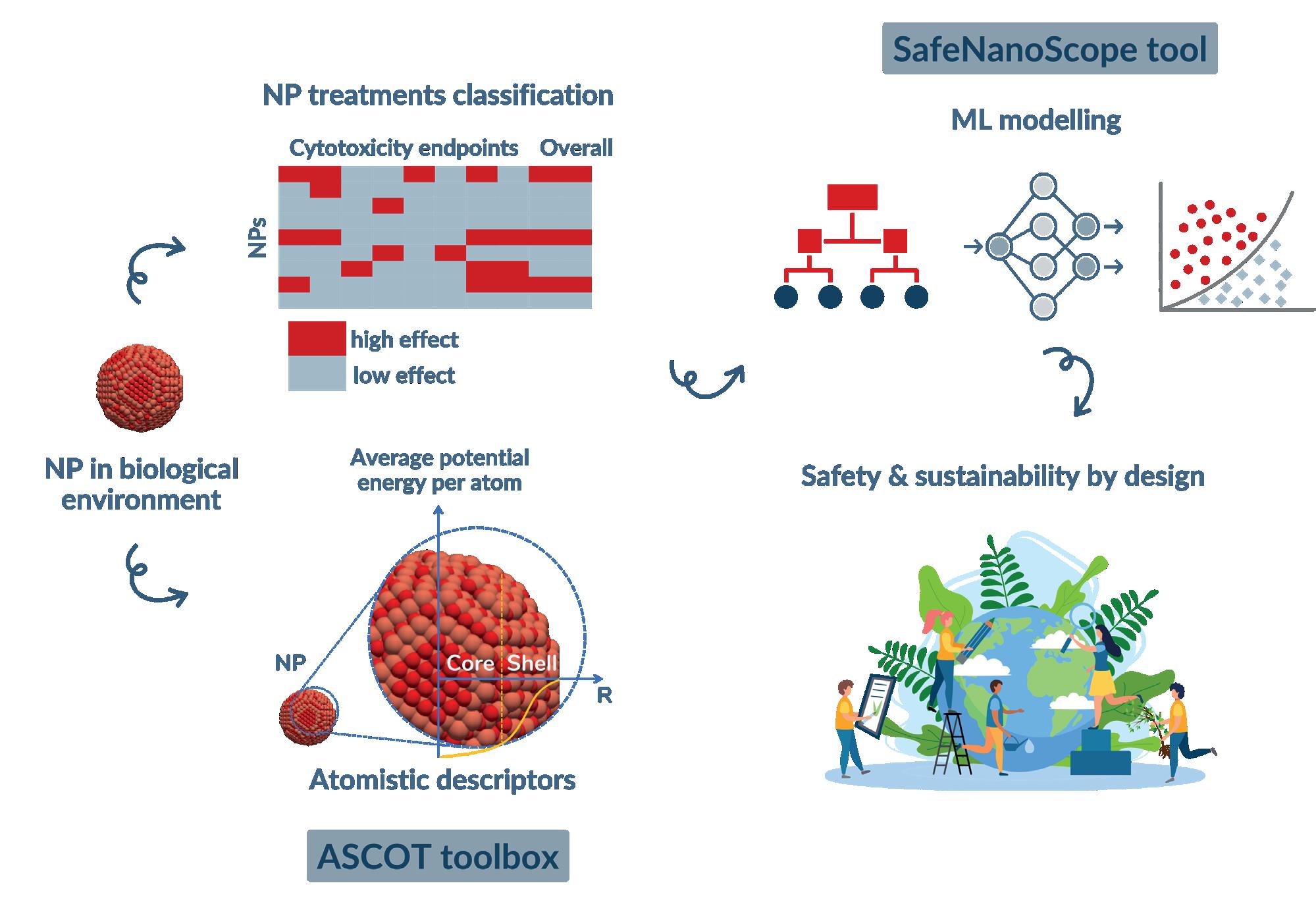
NanoDis system

In the field of nanotechnology, the safety of nanoparticles (NPs) is a crucial concern. Addressing this, in NovaMechanics we have developed and demonstrated innovative tools and strategies with emphasis on Safe- and Sustainable- by-Design (SSbD) principles. Our goal is to offer complex and robust computational models under a user-friendly environment, to democratize access to high-level scientific research.
The Enalos Cloud Platform: A Hub for Nanosafety Innovations Integrating IATA & Sabydoma for Nanosafety
In the SSbD framework, novel approach methodologies (NAMs) play a crucial role in early screening and assessment of NPs for
nanosafety. These methodologies, adhering to the 3R principles of Replacement, Reduction, and Refinement, focus on ethical practices including in vitro and in silico methods. In NovaMechanics we incorporate these approaches under the Integrated Approaches
to Testing and Assessment (IATA) framework, to enhance NP risk assessment and accelerate decision-making.
At NovaMechanics, our contribution to this field involves developing an in silico model using in vitro data and atomistic descriptors from the ASCOT tool, specifically for Ag, TiO2, and CuO NPs. The SafeNanoScope model (SABYDOMA project) employs advanced data manipulation strategies, including synthetic data generation and an automated machine learning (AutoML) process for optimal data handling and variable selection. The model's predictions are backed by a well-defined applicability domain, ensuring reliability. Emphasizing transparency and collaboration, we have made both the data and the model publicly available. The data is accessible through the NanoPharos database, and the model can be explored via the Enalos Cloud Platform , inviting stakeholders to engage with our resources and contribute to the advancement of nanosafety.
To efficiently screen and identify promising material combinations, atomistic simulations play a vital role. However, the digital reconstruction of systems with complex secondary phases, such as NPs, Nanosheets (NSs), and Nanotubes (NTs), presents a significant challenge. Addressing this, the NanoTube toolbox, hosted on the Enalos Cloud Platform, has been innovatively designed to facilitate this process.
The NanoTube Construction Tool built within the DIAGONAL project leverages Crystallographic Information Files from crystallographic databases to reconstruct NTs. It integrates with the OPENKIM database for optimal Force-Field (FF) selection, ensuring each NT's chemical elements are accounted for. Post FF selection, the toolbox applies energy minimization to assess the stability of NTs, alongside computing several descriptors for further machine learning analysis.
The user-friendly interface of the NanoTube Construction Tool allows selection from nine 2-dimensional materials, including 2D-silica and graphene variants. Users
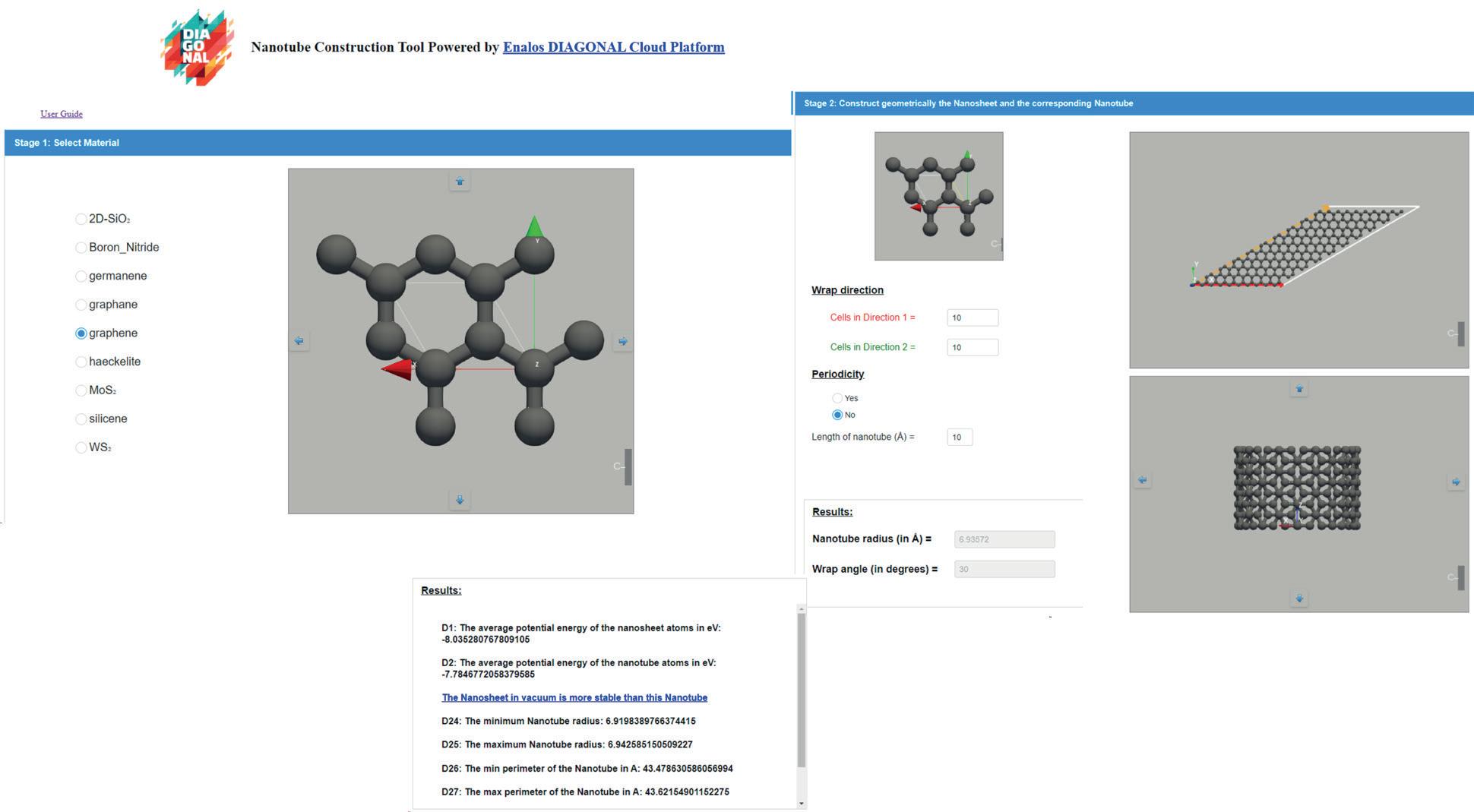 Figure 2: User interface of the NanoTube Construction tool
Figure 2: User interface of the NanoTube Construction tool
can customize the wrapping direction and length of the nanotube, with the ability to view and manipulate the reconstructed structures interactively. Additionally, the tool provides energy-minimized structures and their atomistic descriptors for download, to be used as input in nanoQSAR-type or read-across models or in simulations of NTs with biomolecules, enhancing research and development in material science.
UANanoDock: Analyzing Protein-Nanoparticle Interactions
UANanoDock (built within the CompSafeNano project) serves as a rapid calculator for evaluating the binding affinity between human proteins and NPs. Integrating the UnitedAtom approach, developed by University College Dublin (UCD) into a web tool, one can select proteins from a comprehensive database, facilitating the analysis of their interaction with NPs. Inputs include NP radius, surface charge, and ionic strength of the solution, enabling a thorough examination of protein-NP interactions, to unravel the mechanisms of NPs protein corona formation.
NovaMechanics' commitment to nanosafety
is evident through the development of advanced tools and methodologies, accessible via the Enalos Cloud Platform. These computational strategies can serve as alternatives to traditional methods, enabling the assessment of NPs properties before they are used in commercial products or synthesized. Integrating both experimental and computational NAMs within the IATA framework, NovaMechanics contributes significantly to the safe and efficient development of NPs, aligning with SSbD principles.
Contact
Antreas Afantitis
NovaMechanics Ltd
Cheminformatics & Nanoinformatics Excellence
afantitis@novamechanics.com info@novamechanics.com
www.novamechanics.com
 Figure 3: UANanoDock workflow
Figure 3: UANanoDock workflow



Safe-and-Sustainable-by-Design (SSbD) advanced materials and chemicals (AdMas&Chems) are a central requirement for reaching the ambitious goal of making Europe the first digitally-enabled circular, climate-neutral and sustainable economy. Such new AdMas&Chems need to provide the high functionality required for their advanced applications, whilst simultaneously exhibiting improved safety and sustainability performances that take into account the complete value chain and life cycle, as outlined in the SSbD framework proposed by the EU Joint Research Centre and adopted in the Commission Recommendation of 8 December 2022.
To facilitate adoption by industry and, by doing so, foster the twin green and digital transition of Europe’s economy, the EU launched a number of SSbD-related calls including
Computational models for the development of safe and sustainable by design chemicals.
The PINK project was one of four projects funded under this call and is coordinated by Slovenia-based SME Seven Past Nine d.o.o.
It started in January 2024 with a team of 12 beneficiaries, 2 affiliated entities and 2 associated partners from 13 countries (see Figure 1) and will run for four years. PINK’s overarching aim is to produce innovative modelling software and integrated workflows for the development of AdMas&Chems, which are combined into an industry-ready open innovation platform, the PINK In Silico Hub (PINKISH).

categories (i.e. functionality, cost-efficiency, safety and sustainability,
part)
each stage of the development. Existing data will be integrated and data gaps be filled using innovative modelling and simulation approaches from the complete life cycle and value chain (upper part).
PINK takes a holistic approach (see Figure 2) addressing the needs of industry by solving a multi-objective optimization problem to improve and balance the four requirement categories functionality, cost-efficiency, safety and sustainability. All five steps of the SSbD Framework (hazard assessment, human health and safety aspects in the production and processing phase, human health and environmental aspects in the final application phase, environmental sustainability assessment, and socio- economic sustainability assessment) are integrated into selection considerations at each stage of the
AdMas&Chems development, starting with a limited set of evaluation criteria and rough estimates (low-tier methods) and moving to higher-tier methods in later stages. In this way, confidence in the predictions is continuously improved over multiple design cycles by producing new knowledge on a constantly reduced set of better performing candidates (Figure 3).
PINK combines computational models and a decision support system (DSS) that exploit the combined power of first-principles simulation and pre-existing data, which – in itself – is
further improved by advanced artificial intelligence (AI) technology. This requires the integration of tools from different and hitherto independently developed areas (e.g. materials modelling, (nano)safety, life cycle assessment).
PINK provides this integration in the form of PINKISH based on an advanced semantic and technical Interoperability Framework, giving access to all information and knowledge, and executing SSbD workflows customisable to (a) the application area of the AdMas&Chems, (b) their safety and sustainability concerns of the existing materials, and (c) the status of the relevant development project (from early design ideas to registration and market entry). Industry readiness of the solution will be guaranteed by improving usability, practicability, user experience, and ‘data
provenance’ documentation and security and by integrating these as important aspects into the development of new modelling software and decision support services. The sequence of implementation of the tools will be customised to real-life needs, to improve existing and new AdMas&Chems by industry partners in the PINK Developmental Case Studies and Industrial Demonstrators.
Accordingly, PINK’s central objectives can be summarised as follows:
develop a toolbox of data resources, models and workflows (PINK Services), benefitting from the interoperability and synergy of integrated approaches and provide them as openly accessible software tools and

web services;
build a framework and toolset for technical and semantic interoperability (Interoperability Framework and Infrastructure), based on high FAIRness (findable, accessible, interoperable and reusable) standards essential for information transfer within PINK and enabling re-use by other SSbD workflows or platforms;
integrate all data and modelling services into the PINKISH platform to facilitate data visualization, analysis, and the implementation of a comprehensive AI-enabled SSbD decision support workflow; and
showcase how the computational and digital approaches can boost the innovative capacity of industry and especially SMEs in Developmental Case Studies and Industrial Demonstrators providing real-world stress testing of the provided solutions.
Contact:
Thomas Exner
Seven Past Nine
thomas.exner@sevenpastnine.com
www.sevenpastnine.com


PINK has received funding from the European Union’s Horizon Europe Research and Innovation programme under grant agreement No. 101137809.
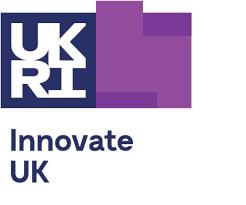

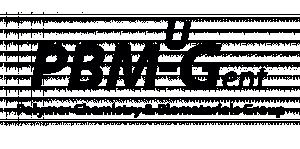

Synthetic polymers (i.e. plastics) are widely used in our everyday life in a broad range of applications, including packaging, household, construction materials, automotive industry, electronic devices and medical products. The problems associated with synthetic polymers are, however, that they are mostly derived from fossil raw materials and that they are not biodegradable. Hence, they pose a threat to the environment when they are not treated
properly after usage, resulting in plastic pollution and the formation of microplastics. An important and wide-spread synthetic polymer is poly(acrylic acid) (PAA), which is a water soluble polymer with anionic character that is used in a plethora of applications, with superabsorbent polymers for disposable hygiene products as the most important one. However, this polymer is also derived from fossil raw materials and not biodegradable,
hence research to develop more sustainable alternatives is emerging. One possible alternative is poly(aspartic acid) (PASP), a biobased and biodegradable poly(amino acid) with properties similar to PAA. PASP has been described in literature for several applications, but reports on photo-crosslinkable PASP are scarce. It would, however, allow the use of new processing methods and exploitation of additional applications.
The review paper, which was published in Polymer in 2024, presents an overview of past and current research efforts focusing on PASP hydrogels, their functionalization strategies, processing methods and applications. The chemical functionalization of PASP is
addressed, highlighting the ability to tailor the functionalities of PASP for customization. Precise control over functional groups for crosslinking enables the preparation of PASP hydrogels that can respond to environmental triggers, rendering them valuable for applications including controlled drug release, tissue engineering and self-healing concrete. Furthermore, the processing methods employed to produce PASP in different forms, such as films, nanoparticles and fibers, are described. Finally, the applications of PASP hydrogels are reviewed, highlighting their potential to help improving human health and environmental sustainability by providing an alternative for fossil-based hydrogels.
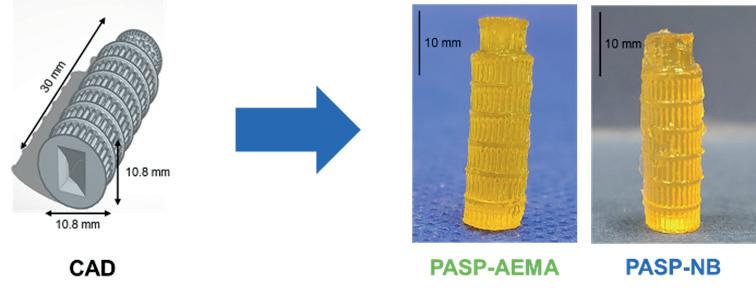
The article, which was published in European Polymer Journal in 2023, describes the functionalization of PASP with two types of photo-crosslinkable moieties, norbornene and methcrylate, and compares crosslinking via a step-growth versus a chain-growth mechanism. The influence of the crosslinking mechanism on the photo-crosslinking kinetics, mechanical properties and biocompatibility of the hydrogels was studied. The applicability of the hydrogels to serve as materials for light-based additive manufacturing via digital light processing (DLP) and two-photon polymerization (2PP) was elucidated. Both materials were processable via DLP and 2PP, offering possibilities towards processing of these materials into constructs serving biomedical applications.
Articles:
DOI: 10.1016/j.polymer.2024.126723
DOI: 10.1016/j.eurpolymj.2023.112017
Contact
Sandra Van Vlierberghe
Polymer Chemistry and Biomaterials Group – University of Ghent
Sandra.VanVlierberghe@UGent.be
www.ugent.be

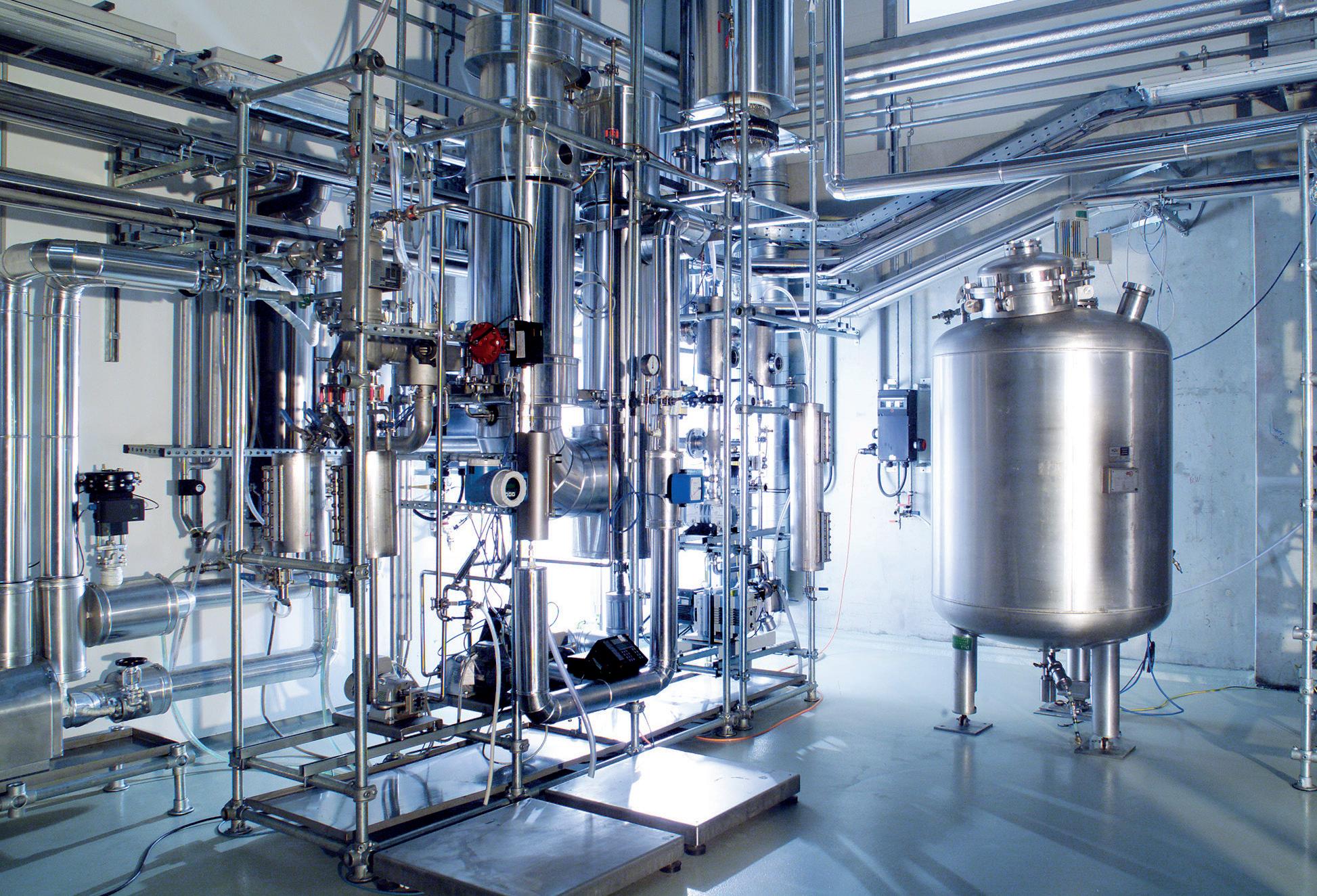
CONTRIBUTION FROM BDI-BIOENERGY INTERNATIONAL
Graz-based industrial holding EOSS, Kanzler Verfahrenstechnik and the Rieckermann Group announce their strategic cooperation and the acquisition of BDI-BioEnergy International.
EOSS Industries, Kanzler Verfahrenstechnik and the Rieckermann Group are pooling their strengths to implement their shared vision of circular economy; BDI’s technological leadership makes an important contribution. As part of this agreement, EOSS Industries

also absorbs the shares in BDI Holding and BDI-BioLife Science. The BDI Group currently employs about 140 staff members. The parties have agreed not to disclose the acquisition price.
Headquartered in Graz, BDI-BioEnergy International is an internationally operating niche player specializing in the development of chemical and biochemical procedures, the implementation of product plants for biodiesel and biogas as well as plants for the processing

of pyrolysis oil and depolymerization. BDI-BioLife Science, based in Hartberg, is the number one manufacturer of natural astaxanthin in Central Europe and active in the life science industry.
By combining entrepreneurial leadership with innovational strength and the benefits of a strong participation holding, EOSS Industries has acquired renown as a pioneer in the strategic development and support of medium-sized companies. Together with EOSS Industries, the internationally operating industrial solutions providers Kanzler Verfahrenstechnik and the Rieckermann Group engage in the takeover of BDI-BioEnergy International via the captive investment branch JR New Horizons.
Read the full article HERE.
Contact:
Andreas Pickl
BDI-BioEnergy International GmbH press@bdi-bioenergy.com
www.bdi-bioenergy.com
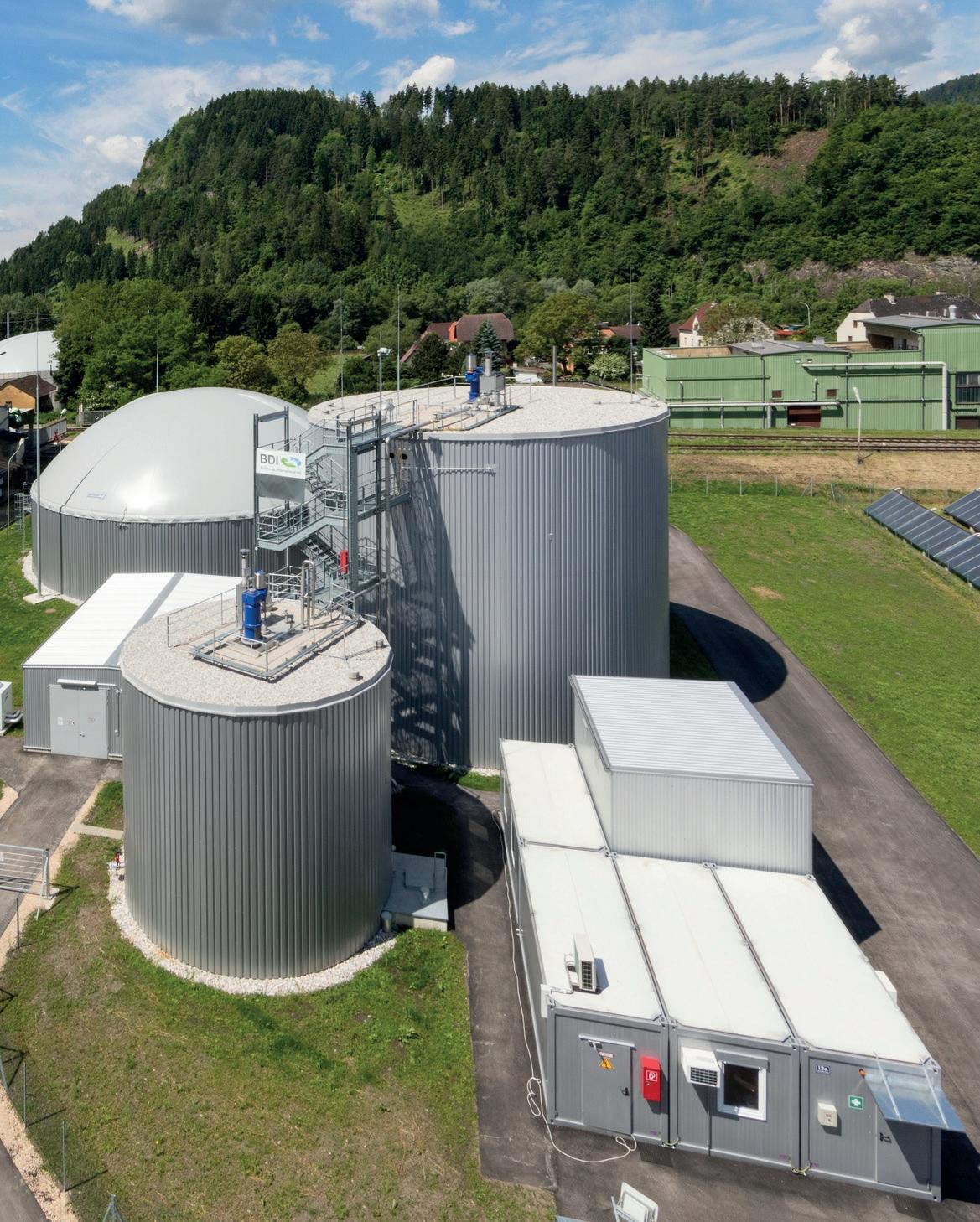
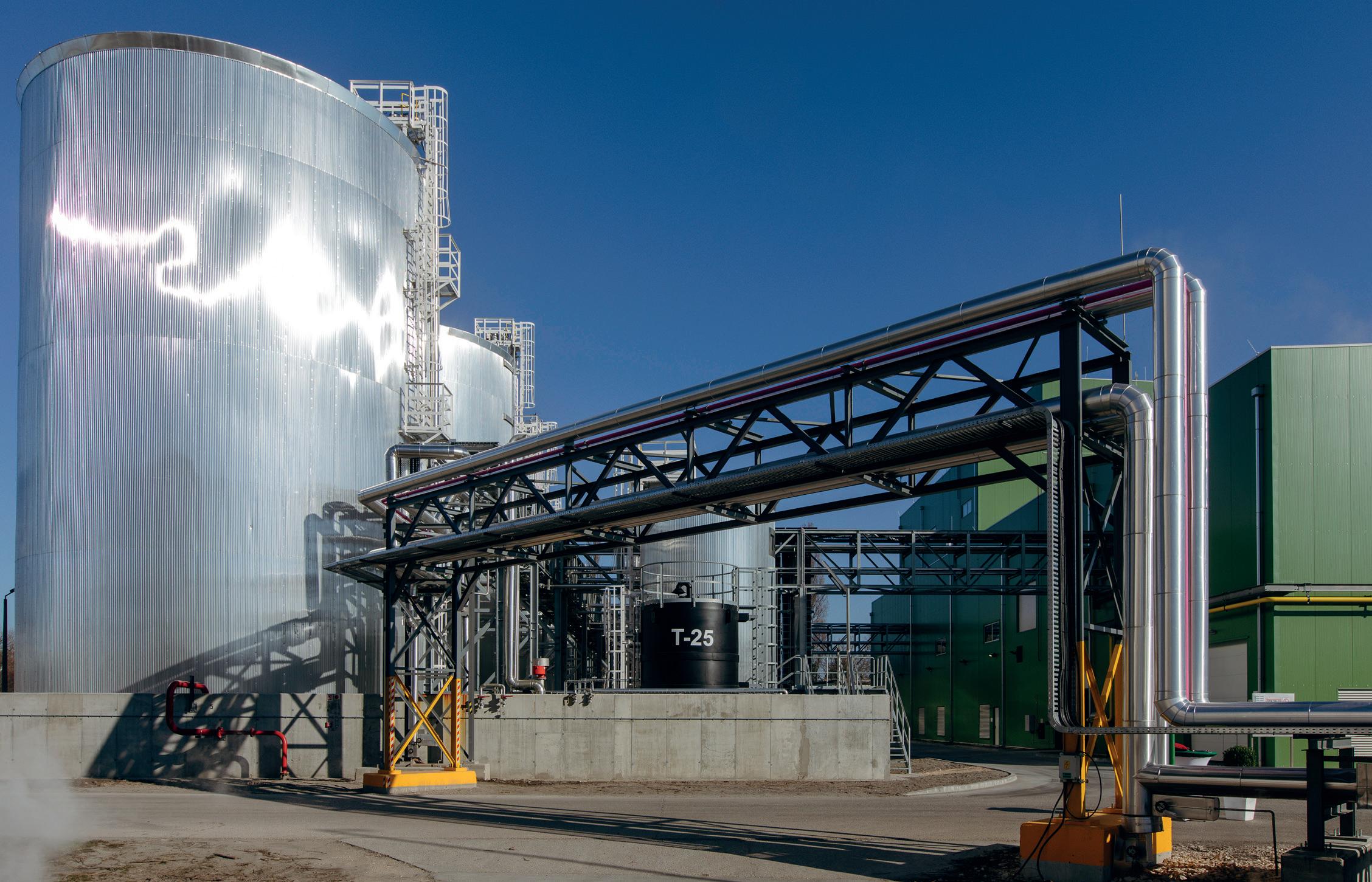
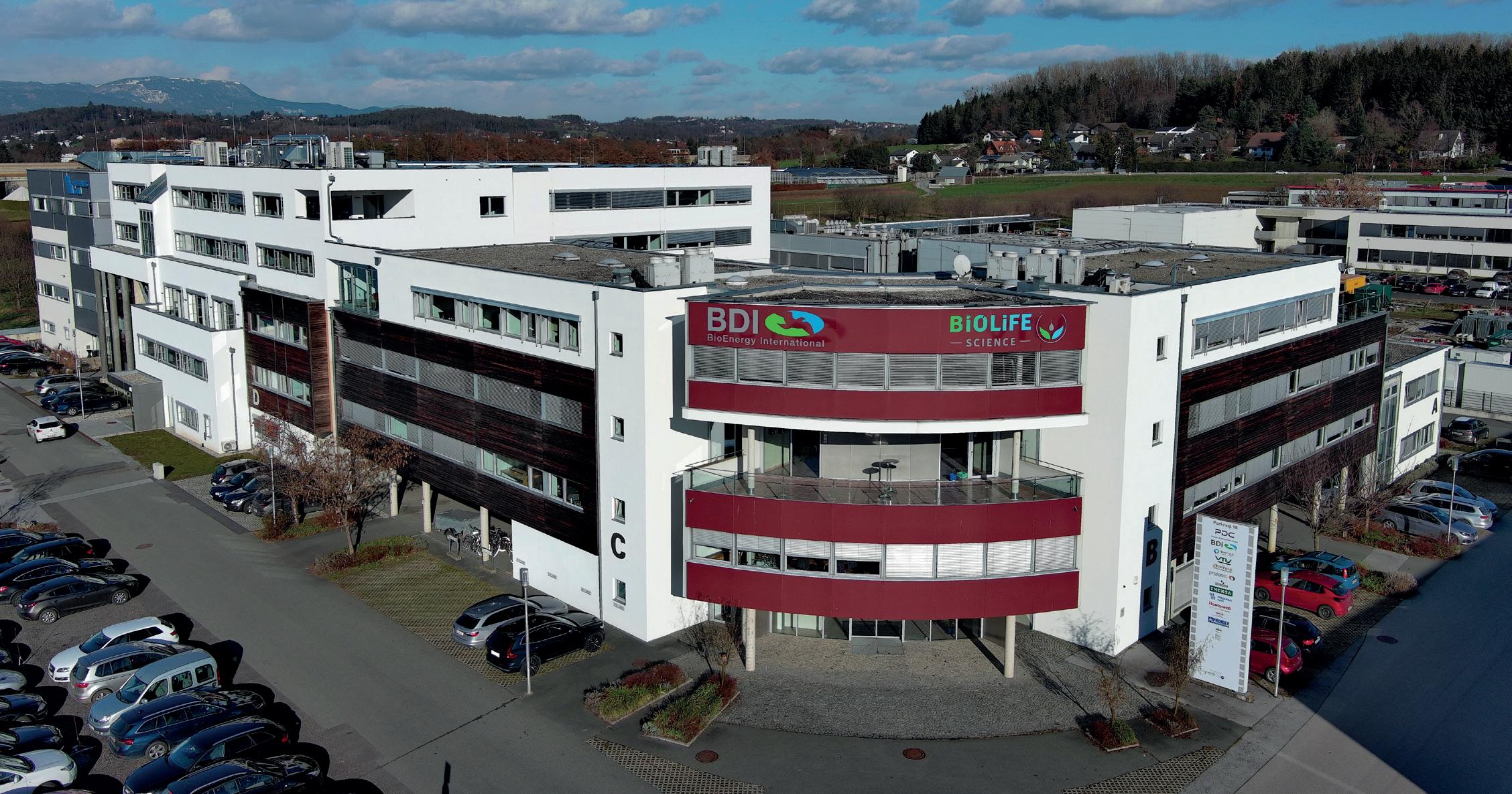
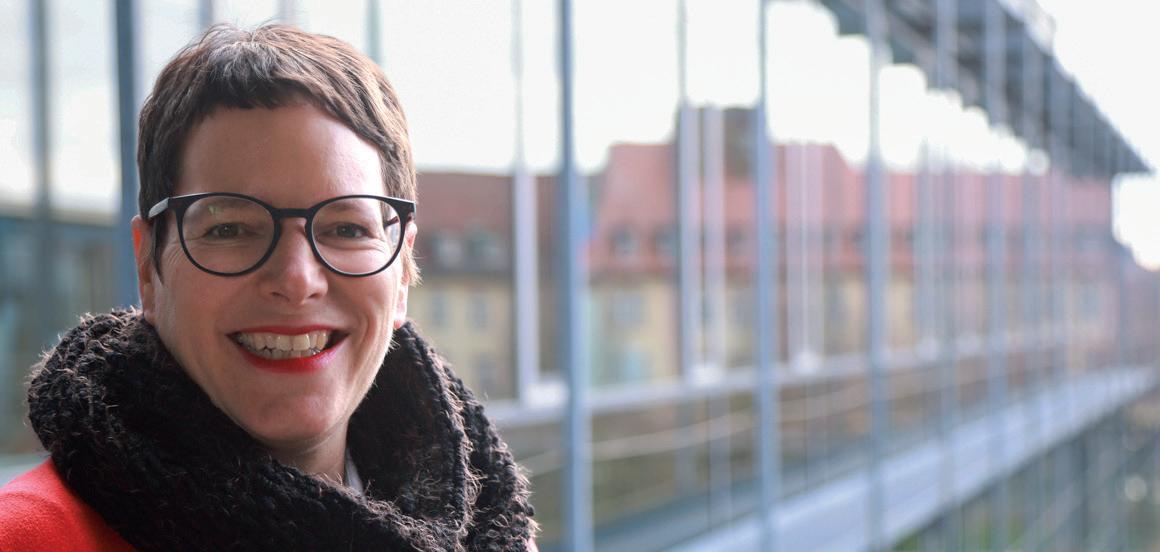
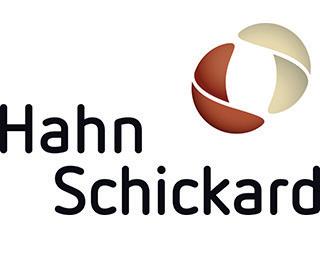
With her many years of experience as a research biochemist on the one hand and as a coordinator of large consortia on the other, the new Cluster Manager Hanna Hasselblatt is contributing tailored expertise to the Clusters4Future nanodiag BW (nanopore technology for the molecular diagnostics of the future) from February 2024 onward. Her experience as a project coordinator in a large consortium funded by the Federal Ministry of Education and Research (BMBF) in the Medical Informatics Initiative has prepared her very well for the challenges and opportunities of her new position.
In her new role at nanodiag BW, Dr. Hasselblatt wants to create a solid foundation for cooperation in the innovation network and promote an open culture of innovation and risk-taking. Her vision for the future of the nanodiag BW cluster is based on the basic idea of the BMBF’s Future Cluster Initiative to bring together academic basic research and product innovation in regional networks and thus bring cutting- edge research into application more
quickly: “My goal is to make nanodiag BW a nucleus of accelerated innovation, where members from basic research, development and companies – especially founders – find high added value.”
Read the full article HERE.
Contact
Hahn-Schickard-Gesellschaft für angewandte Forschung e.V.
Clusters4Future nanodiag BW – nanopore technology for the molecular diagnostics of the future
Anne-Marie Bergfeld
Anne-Marie.Bergfeld@Hahn-Schickard.de www.nanodiag.de


MATERIALS, the Institute for Sensors, Photonics and Manufacturing Technologies at JOANNEUM RESEARCH, has been very successful in the current Horizon Europe call TWIN GREEN AND DIGITAL TRANSITION 2023. MATERIALS is coordinating the strategically important "MULTIMOLD" and "WAVETAILOR" projects, thereby achieving a particularly high level of visibility throughout Europe in the field of sustainable production technology and laser technology.
"As a result of this call, JOANNEUM RESEARCH is the only European organization coordinating two strong international consortia in the field of production technologies. In addition to the welcome funding that we are able to attract for our business partners and ourselves as a result, we are finally establishing ourselves at the forefront of the European research landscape," says MATERIALS Director Paul Hartmann, summarizing the success. The volume of both projects amounts to around 10 million euros. 2 million euros of this will go to JOANNEUM RESEARCH, while
a further 1.6 million euros will be channeled into the research of the other Austrian project partners.
Read the full article HERE
Contact
JOANNEUM RESEARCH Forschungsgesellschaft mbH Elke Zenz
Elke.Zenz@joanneum.at www.joanneum.at
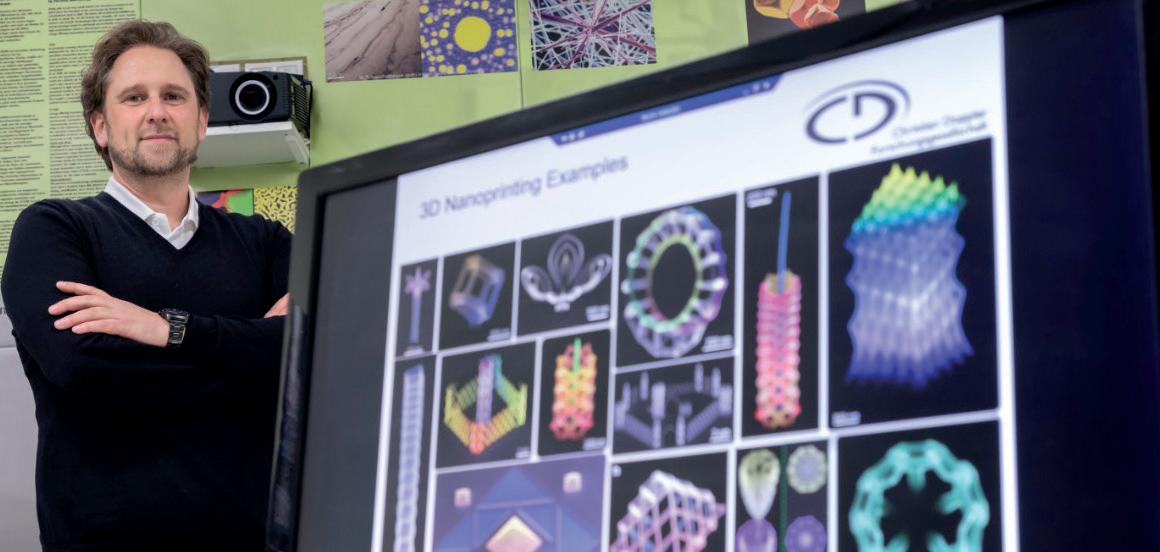

The shape, size and optical properties of 3-dimensional nanostructures can now be simulated in advance before they are produced directly with high precision on a wide variety of surfaces.
For around 20 years, it has been possible to modify surfaces via nanoparticles so that they concentrate or manipulate light in the desired way or trigger other reactions. Such optically active nanostructures can be found in solar cells and biological or chemical sensors, for example. In order to expand their range of applications, researchers at the Institute of Electron Microscopy and Nanoanalysis (Graz University of Technology) and the Graz Centre of Electron Microscopy (ZFE) have been working for more than one decade on manufacturing not only flat nanostructures, but in particular complex, free-standing 3D architectures.
The team led by Harald Plank, Verena Reisecker and David Kuhness has achieved two breakthroughs. It is now possible to precisely simulate the required shapes and sizes of nanostructures in advance to achieve the desired optical properties, which can then be accurately produced. They have also managed to completely remove chemical impurities, incorporated during initial production without negatively impacting the 3D nano architectures.
Read the full article HERE. Contact
Harald PLANK harald.plank@tugraz.at
Verena REISECKER verena.reisecker@tugraz.at www.tugraz.at

Image Source: BMBWF/ elephant and porcelain GmbH/ Gerald Mayer-Rohrmoser
Another battery leak … so annoying. And poisonous. But it soon may be history, at least according to researchers like Katharina Hogrefe, who want to replace liquid electrolytes in batteries with solid ones.
This would not only eliminate the aforementioned dangers and inconvenience, but also ensure more safety, energy density and sustainability. “Today, lithium materials are mainly used as electrolytes in batteries,” explains the researcher. “Lithium is a very light element and allows the ions to move through it quite freely.” However, lithium is also one of the rare metals and a critical resource. Hogrefe and her colleagues would therefore like to replace lithium with different solids, such as ceramics with sodium. But there is still a lot to do before then, because the challenges involved in switching from a liquid to a solid are considerable. “Electrolytes in batteries must be able to conduct the ions. This is much

easier with a liquid than with a rigid solid. They have much less freedom of movement there. If the ions are too slow, the battery will either not work at all or only very poorly.”
Katharina Hogrefe’s favorite method of analysis in her research work is magnetic resonance spectroscopy, in which particles that are invisible to humans can be analyzed on the basis of their magnetic properties. “These are giant magnets that generate great magnetic fields.” She is primarily concerned with optimizing the conductivity of the solid, doping it with other substances and possibly creating structural disorder.
Read the full article HERE.
Contact Katharina HOGREFEGraz University of Technology Institute for Chemistry and Technology of Materials katharina.hogrefe@tugraz.at www.tugraz.at
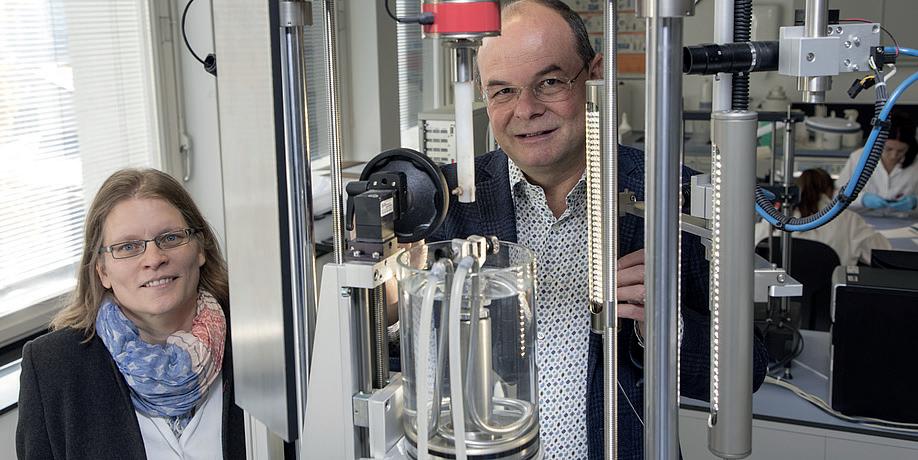 BIOMECHANICS
BIOMECHANICS
Karin Ellermann and Gerhard A. Holzapfel are jointly managing the lead project.
Image source:
Lunghammer – TU Graz

The heart lies at the center of our body. It keeps us alive with its beats and is also known as our “engine”. At TU Graz, our most important muscle is being researched using methods from biomedical engineering, mechanical engineering, civil engineering, computer science and mathematics.
The aorta, the main artery, is responsible for transporting our blood from the heart to the furthest corners of our body. And it can become seriously ill. Gerhard A. Holzapfel, head of the Institute of Biomechanics at Graz University of Technology (TU Graz), has focused much of his research on atherosclerosis. Six years ago he found a new focus: aortic dissection – a disease that affects around six in 100,000 people and is still little researched due to its relative rarity. A healthy aorta consists of several individual wall layers that are connected to each other. In an aortic dissection, the wall layers in the aorta
become detached. This creates a kind of false lumen, in other words – a cavity or a second pathway parallel to the original true lumen where blood flows. The aorta can narrow or tear, or thrombi can form and detach. Funded by TU Graz, researchers from the fields of biomedical engineering, mathematics, fluid mechanics, electronics, computer science, civil engineering and mechanical engineering have been investigating this disease and possible diagnostic options over the past six years in the lead project “Mechanics, modelling and simulation of aortic dissection”.
“The aorta is incredibly interesting from an engineering point of view,” says Gerhard A. Holzapfel. “It has a wall that consists of an elastic solid whose microstructure we can analyze using biophysical and microscopic methods. The blood inside the wall follows the laws of fluid mechanics and is also an excellent conductor of electricity – so I can observe how a very weak electric field affects conductivity and blood flow.”
Read the full article HERE.
Contact
Gerhard A. Holzapfel
Graz University of Technology
Institute of Biomechanics
holzapfel@tugraz.at www.tugraz.at
If you want to view all members’ publications sent to us from 2018 up to March 2024 you can visit the website.
All BioNanoNet members are invited to send us their recent publications to info@bnn.at to promote them in our network.


Bachmann TT, Mitsakakis K, Hays JP, van Belkum A, Russom A, Luedke G, et al. Expert guidance on target product profile development for AMR diagnostic tests. BMJ Glob Health. 2023;8(12).
https://doi.org/10.1136/bmjgh-2023-012319.
Bitter J, Pfeiffer M, Borg AJE, Kuhlmann K, Pavkov-Keller T, Sánchez-Murcia PA, et al. Enzymatic ß-elimination in natural product O- and C- glycoside deglycosylation. Nature Communications. 2023;14(1):7123.
https://doi.org/10.1038/s41467-023-42750-0.
Cabello-Olmo E, Romero M, Kainz M, Bernroitner A, Kopp S, Mühlberger M, et al. Inkjet-Printed and Nanopatterned Photonic Phosphor Motifs with Strongly Polarized and Directional Light-Emission. Advanced Functional Materials. 2023;33(51):2305907.
https://doi.org/10.1002/adfm.202305907.
Derflinger C, Kamm B, Leitner G, Paulik C. Novel Synthetic Strategy for the Production of Fully Bio-Based Greant C, Van Durme B, Van Hoorick J, Van Vlierberghe S. Multiphoton Lithography as a Promising Tool for Biomedical Applications. Advanced Functional Materials. 2023;33(39):2212641.
https://doi.org/10.1002/adfm.202212641.
Haslinger MJ, Maier OS, Pribyl M, Taus P, Kopp S, Wanzenboeck HD, et al. Increasing the Stability of Isolated and Dense High-Aspect-Ratio Nanopillars Fabricated Using UVNanoimprint Lithography. Nanomaterials. 2023;13(9):1556.
https://doi.org/10.3390/nano13091556.
Johannsen B, Baumgartner D, Karpíšek M, Stejskal D, Boillat-Blanco N, Knüsli J, et al. Patient Stratification for Antibiotic Prescriptions Based on the Bound-Free Phase Detection Immunoassay of C-Reactive Protein in Serum Samples. Biosensors. 2023;13(12):1009.
https://doi.org/10.3390/bios13121009.
Kastner J, Tomarchio F, Decorde N, Kehrer M, Hesser G, Fuchsbauer A. Integration of Inkjet Printed Graphene as a Hole Transport Layer in Organic Solar Cells. Micromachines. 2023;14(10):1858. https://doi.org/10.3390/mi14101858.
Mayer V, Frank AC, Preinsperger S, Csar P, Steppert P, Jungbauer A, et al. Removal of chromatin by salt-tolerant endonucleases for production of recombinant measles virus. Biotechnol Prog. 2023;39(4):e3342.
https://doi.org/10.1002/btpr.3342.
Mühlberger MM, Kopp S, Deyett AA, Pribyl M, Haslinger MJ, Siegel AM, et al. Nanoimprinted Hierarchical Micro-/Nanostructured Substrates for the Growth of Cardiomyocyte Fibers. Nanomanufacturing. 2023;3(4):416-33.
https://doi.org/10.3390/nanomanufacturing3040026.
Pavlicek A, Neubauer S, Zafiu C, Huber-Humer M, Ehmoser E-K, Part F. The use and detection of quantum dots as nanotracers in environmental fate studies of engineered nanoparticles. Environmental Pollution. 2023;317:120461.
https://doi.org/10.1016/j.envpol.2022.120461.
Scherf MP, A., Hemetzberger J, Wittwer D, Wieser M, Weichselbaumer V, Schmidt T, et al. 3D Dispensing of Waterborne Polyurethane on Textile. Advanced Research in Textile Engineering. 2023;8(3):1089.
Šimić M, Neuper C, Hohenester U, Hill C. Optofluidic force induction as a process analytical technology. Analytical and Bioanalytical Chemistry. 2023;415(21):5181-91.
https://doi.org/10.1007/s00216-023-04796-3.
Wicaksono WA, Cernava T, Wassermann B, Abdelfattah A, Soto-Giron MJ, Toledo GV, et al. The edible plant microbiome: evidence for the occurrence of fruit and vegetable bacteria in the human gut. Gut Microbes. 2023;15(2):2258565.
https://doi.org/10.1080/19490976.2023.2258565.
Zeppetzauer F, Süss R, Nadányi R, Putz RF, Lisý A, Paulik C, et al. Environmentally Friendly Extraction from Picea Abies Bark as an Approach to Accessing Valuable Antioxidants in Biorefineries. Processes. 2023;11(7):2145.
https://doi.org/10.3390/pr11072145.
CONFERENCE PROCEEDINGS
Haslinger M, Kopp S, Jonaityte V, Moharana A, Außerhuber H, Mühlberger M, editors. Direct patterning of functional materials using nanoimprint lithography. 38th European Mask and Lithography Conference; 2023: SPIE.
https://doi.org/10.1117/12.2674052.
Scherf M, Kulha P, Kokkinis G, Heer R, Stark P, editors. Breath Rate Sensor AM Integration Concept for E-textiles. 2023 IEEE SENSORS; 2023 29 Oct.-1 Nov. 2023.
https://doi.org/10.1109/SENSORS56945.2023.10324931.
Schmidt TW, Scherf M, Wittwer D, Schumann P, Guillén E, Kastner J, editors. HAPTIC digital 3D printing on textile surfaces for high-volume footwear manufacturing. Materials Today: Proceedings; 2023 2023/01/01/.
https://doi.org/10.1016/j.matpr.2023.05.619.

The EU project SSbD4CheM - Safe and Sustainable by Design framework for the next generation of Chemicals and Materials (HORIZON-CL4-2023-Resilience-01-21, Grant agreement no. 101138475, Start date: 1 January 2024, End date: 31 December 2027), coordinated by Milica Velimirovic from VITO (Vlaamse Instelling voor Technologisch Onderzoek, Belgium) kicked off in January 2024.
BNN is among the 19 partners from 14 different countries including industry, academia and research centres, who will work together to achieve SSbD4CheM’s main objective of promoting the development of products and processes that are safe for people and the environment while being economically sustainable. The aim of SSbD4CheM is to
integrate safety and sustainability aspects into the design and development of new products and processes instead of considering them as an afterthought.
SSbD4CheM is designed as a toolbox, a set of tools, guidelines, databases and other resources that can be used by stakeholders in industry, government, academia and civil society to incorporate alternative methods for safety assessment of new chemicals and materials (e.g., NAMs) without animal models; robust, reliable and faster test methods or models, including high-throughput and in silico models; as well as sustainability considerations such as introduction of ex-ante LCA method into their product and process design. The project also includes the harmonisation and validation of analytical and toxicological
methods for submission to regulatory and standardisation bodies to contribute to the development of new standards.
The SSbD4CheM toolbox will be tested through three different use cases, where R&D institutes and industry partners are working together:
In the automotive use case , the development of new composite materials in the automotive industry will be addressed in cooperation with the Stellantis and BioNanoNet member Wood K plus.
The textiles use case deals with the plasma functionalisation of textiles to achieve antimicrobial and water-repellent properties. The Turkish company Kortex produces sustainable textiles from recycled PET and PLA. Organic monomers that are at least 50% bio-based and therefore have a lower environmental impact are to be used for the coating. Together with CTCR, a Spanish
research institute with experience in plasma coating, functional layers will be applied that are significantly thinner and offer advantages in terms of sustainability and safety.
In the cosmetics use case , the NIC (National Institute of Chemistry, Slovenia) is working in cooperation with AHAVA cosmetics to find applications for nanocellulose as additive in the cosmetics sector.
In addition to BNN, SSbD4CheM’s beneficiaries include two BioNanoNet members:
Kompetenzzentrum Holz GmbH (Austria) (Wood K plus)
Luxembourg Institute of Science and Technology (Luxemburg) (LIST)
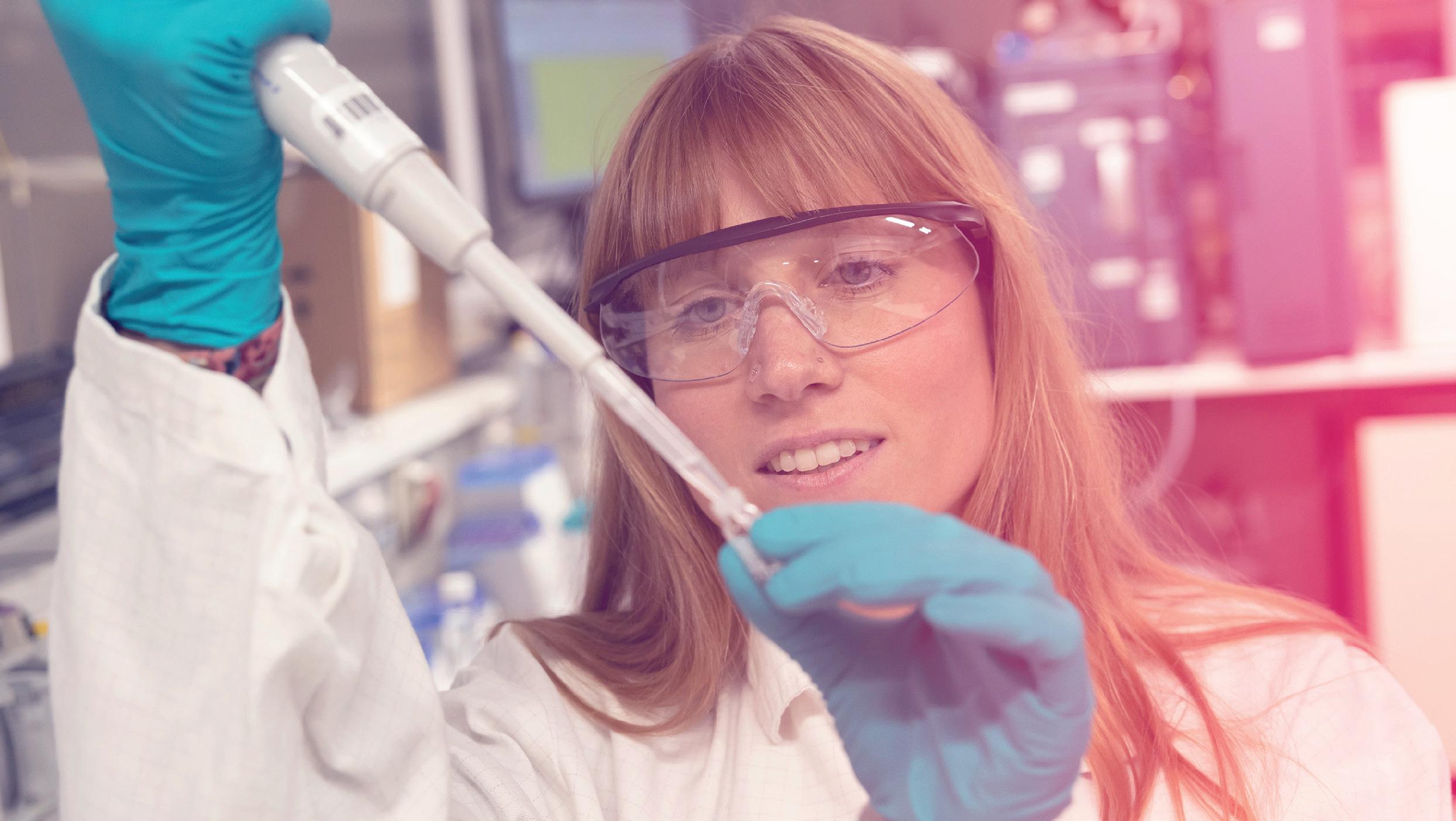
As leader of the work package on Stakeholder Engagement, Training, Dissemination and Exploitation, BNN ensures efficient and successful liaisons with other relevant projects, networks and clusters (e.g., the EU NanoSafetyCluster (NSC)), as well as appropriate and timely stakeholder engagement. Moreover, BNN develops the overall communication & dissemination strategy.
Contact
Beatriz Alfaro Serrano
BioNanoNet Forschungsgesellschaft mbH beatriz.alfaro@bnn.at www.bnn.at


This project has received funding from the European Union’s Horizon Europe research and innovation programme under grant agreement n° 101138475. UK participants in SSbD4CheM project are supported by UKRI. CH participants in SSbD4CheM project receive funding from the Swiss State Secretariat for Education, Research and Innovation (SERI).


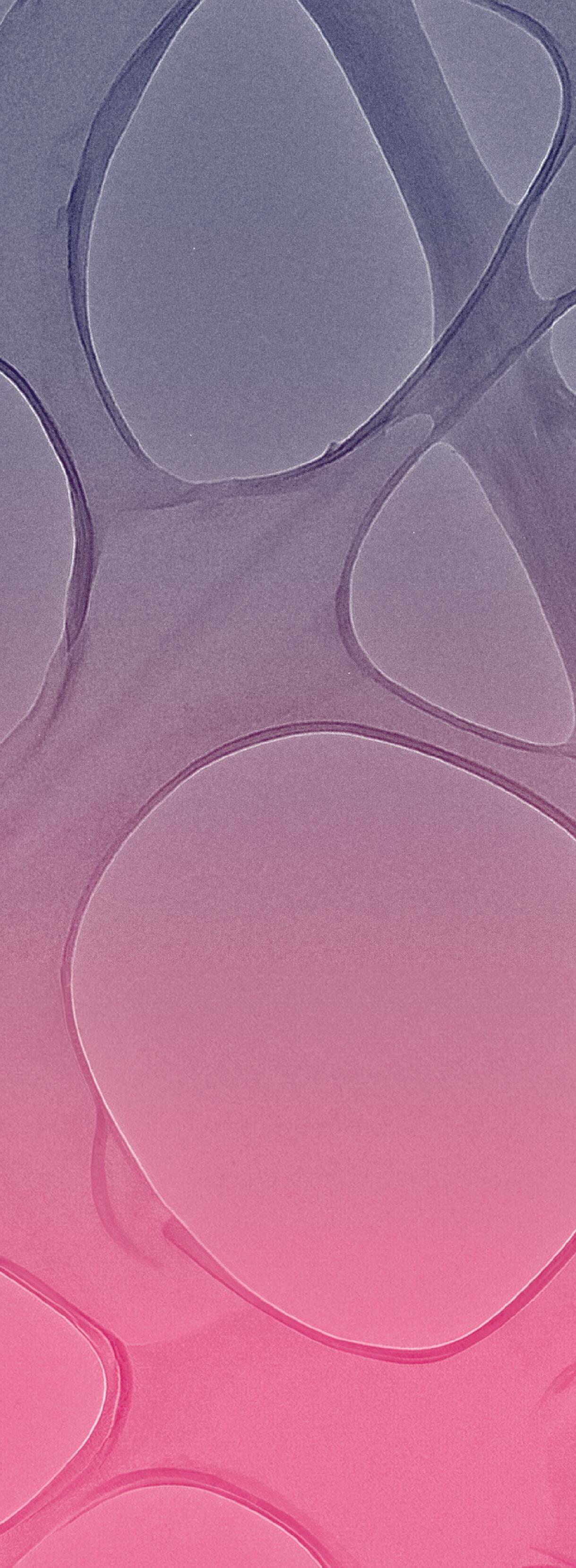
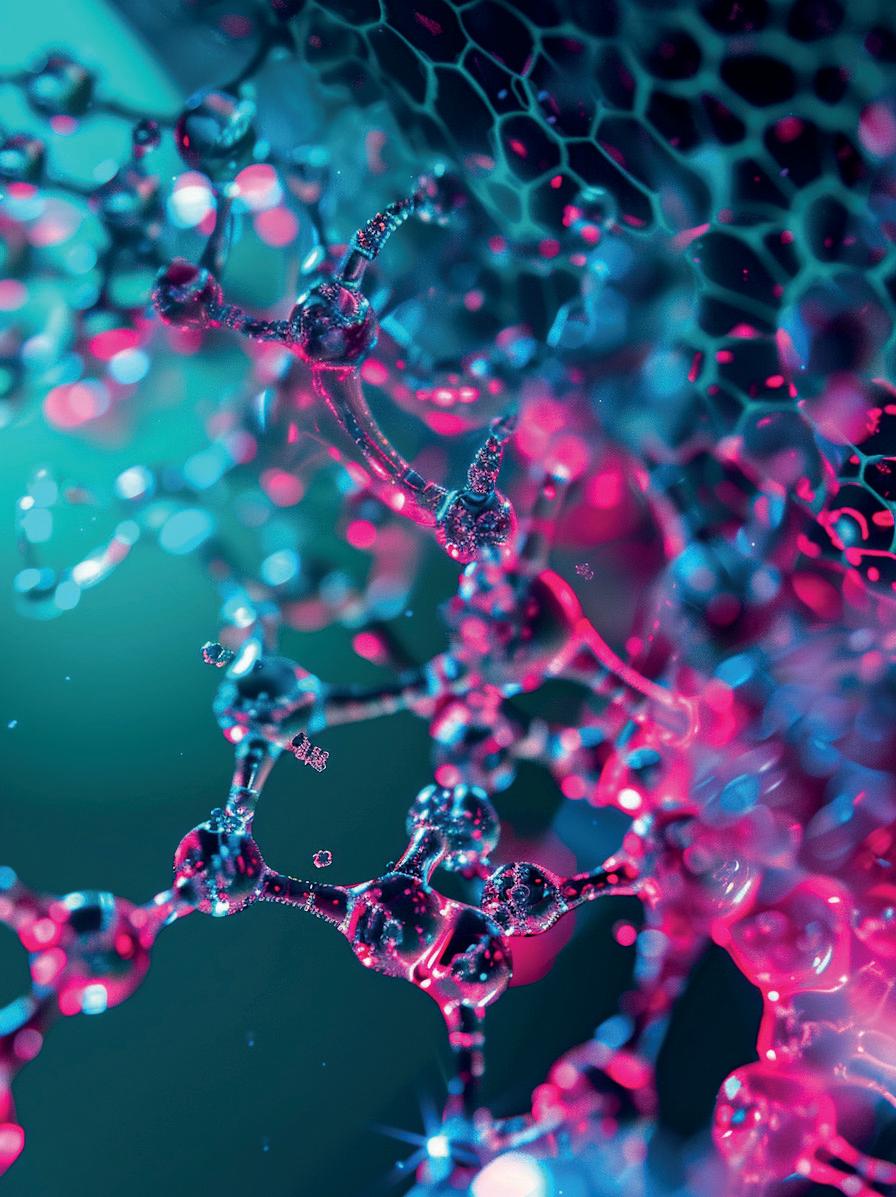


Applications are open until 3 May 2024 for the PHOENIX-OITB Open Call Round 2!
PHOENIX-OITB’s mission is to offer a Single-Entry-Point for a consolidated network of facilities, technologies, services and expertise for all the technology transfer aspects from characterization, testing, verification up to scale-up, GMP-compliant manufacturing and regulatory guidance in the field of nanopharmaceutical development.
The services and expertise provided by the PHOENIX-OITB include production and characterisation under GMP conditions, safety evaluation, regulatory compliance and commercialisation boost. Under the scope of
the Open Call, we offer the following service categories:
Physico-Chemical Characterization
In vitro Characterisation
In vivo Characterisation
Manufacturing
Any legal entity (SMEs, start up or RTOs) and research group, based in the European Union or associate countries of H2020 can apply to this call.
The Evaluation Committee will evaluate each proposal in three main criteria:
Implementation Impact
First-stage applications are due 3 May 2024 . The applicants will be informed about the decision made by the Evaluation Committee by the end of 31 May 2024 via email. A Stage 2 detailed application must then be submitted by 28 June 2024 . Awarded projects must be completed by the end of the PHOENIX project (2025).
For more information and all application documents, visit our website:
Open Call - Phoenix
Business development and overall sustainability of the project and the future OITB (co-leads of WP1). These activities will be in close collaboration with WP6, led by BNN, dedicated to dissemination and exploitation activities for marketing purposes and establishing the connections with stakeholders during the project.
Contact
Nazende Günday-Türeli MyBiotech GmbH N.Guenday-Tuereli@mybiotech.de www.mybiotech.de
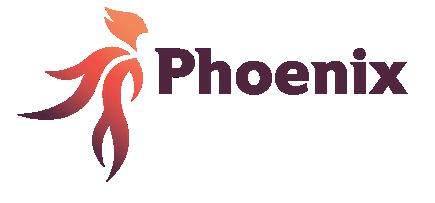

PHOENIX project has received funding from the European Union’s Horizon 2020 research and Innovation programme under grant agreement n° 953110.
A slit-impinging micro-mixer (SIMM) used for nanoparticle production through nanoemulsion formation. (a,b) Microscopy image of the mixing inlay (from Cenya Imaging, a member of the PHOENIX OITB). RCPE’s simulation framework: (c) Direct numerical simulation of droplet trajectories through the mixing device and (d) auxiliary simulation of droplet breakup based on the unsteady stress history experienced by the droplet in the mixing plane (e).

Nanoparticles have shown great promise as a pharmaceutical carrier, evidenced most strongly by the success of lipid nanoparticles as carriers for mRNA vaccines during the COVID-19 pandemic. However, there is a gap in knowledge between fundamental nanotechnology research and the expertise required for industrial-level scale-up of nanopharmaceuticals. The aim of PHOENIXOITB gGmbH , founded in November 2023, is to bridge this gap by enabling the scale-up of nanopharmaceuticals from lab to industrial scale. This is achieved by providing a Single


Entry Point for technology transfer, including characterization and testing, predictive modeling, and GMP-compliant manufacturing of nanoparticle-based pharmaceuticals.
RCPE, as a member of the PHOENIX-OITB, is developing a simulation framework to enable the prediction of nanoparticle critical quality attributes (CQAs), such as size, shape, surface properties, and drug loading capacity. While nanoparticle technology has advanced rapidly in the past decade, the majority of innovation has relied on empiricism using data obtained through experimental trials. Simulation technologies, which are used in the rest of the pharmaceutical industry, have not reached suitable maturity to be used for reliable nanoparticle CQA prediction. The most significant challenge to developing these simulation technologies is the large separation of length and time scales between the pharmaceutical processing scale and the scale of the nanoparticle: the molecular length scale is nearly one million times smaller than the millimeter characteristic scale of nanoparticle production devices, and the disparity in timescales one million times greater still.
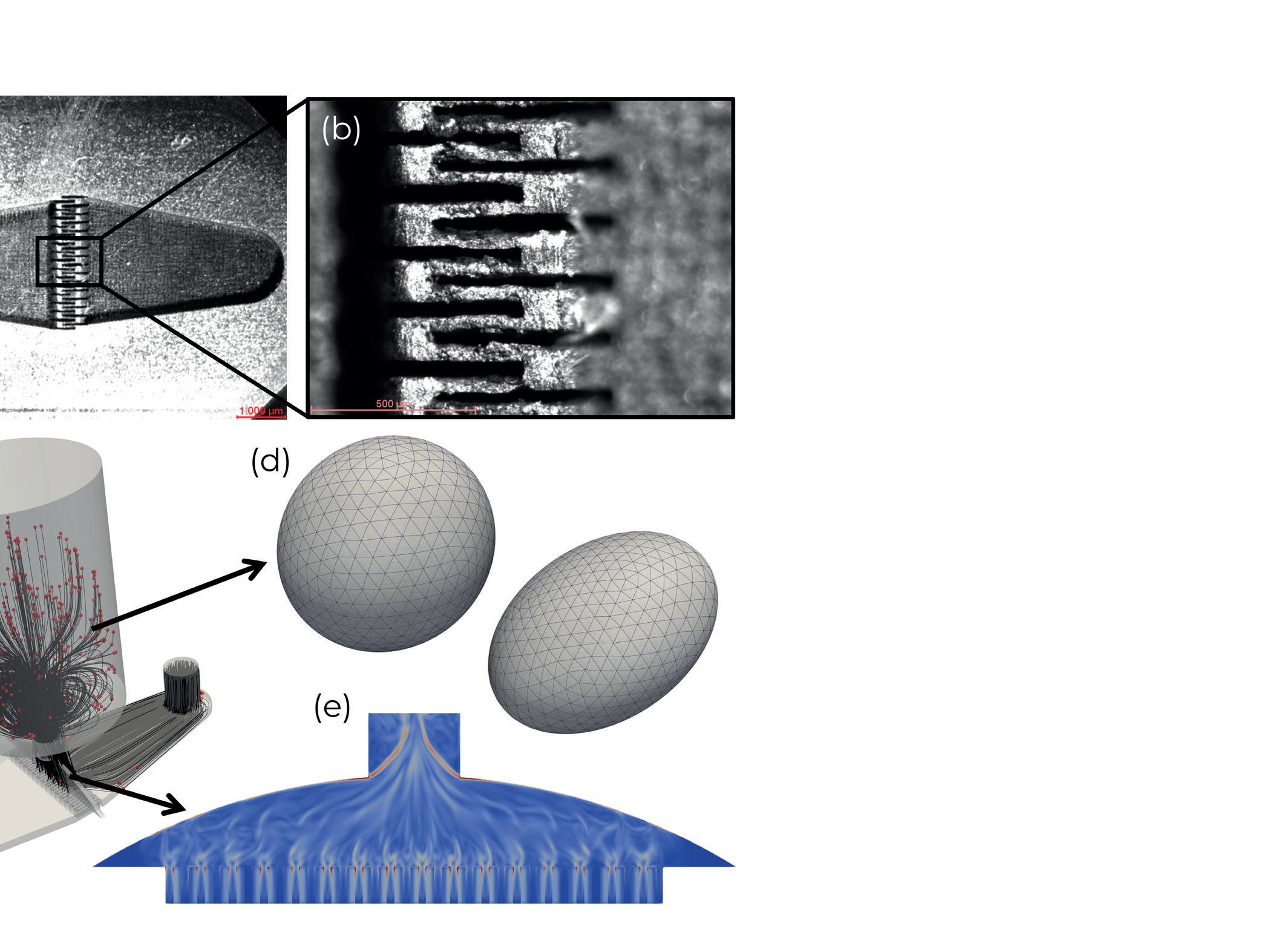
Notable examples in which simulations could inform nanoparticle production are small-scale turbulent mixing for flash nanoprecipitation and nanoparticle self-assembly, fragmentation of dense particle suspensions in impinging jets, and nanoemulsion formation through
ultrasonication or turbulent homogenization.
All of these applications share the same wide gulf in scales between the macro- and nanoscale. While simplifications and models attempt to bridge this gap in scales, the coupling of large-scale machine parameters to the nanoparticle CQAs and lack of suitable reduced-order models pose challenges to the predictive power of existing simulation technologies.
RCPE has overcome these challenges by developing a simulation framework that cleverly reaches across the gaps in length and time scales. This coupling strategy works in two directions, top-down and bottom-up, and relies on combining a thorough understanding of the physics and state-of-the art simulation in the micro, meso, and macro regimes.
In the top-down direction, simulations take advantage of the fact that nanoparticles and nanoemulsion droplets are much smaller than the smallest scales of turbulent motions of the flow on the production scale. The result
is that nanodroplet deformation and breakup is driven solely by the strain rates imposed by the smallest flow scales, which permits a decoupling of the simulation of the mixing flow fields and droplet breakup: instead of simulating all scales at once, strain rate histories along trajectories of particles in the macroscale flow from computational fluid dynamics (CFD) simulations can be used as input to high-fidelity auxiliary simulations of droplet breakup at the mesoscale.
Since the specifics of the droplet and particle surface behavior at the mesoscale are driven by molecular effects, microscale coarse- grained molecular dynamics (cgMD) simulations are performed to determine nanoparticle surface properties to provide a coupling from the molecular scale to the mesoscale.
Finally, the mesoscale is where the simulation framework all comes together. Again, in this regime, RCPE has leveraged an understanding of the physics to greatly simplify the simulation approach. By recognizing that the

flow is viscously dominated at the mesoscale, simulations only need to resolve the interface of the droplet, which greatly reduces the time for each computation. Additionally, the effects of differing viscosities, surface properties, surfactants, and thermal fluctuations are readily investigated.
RCPE is developing this mesoscale simulation code in-house, and this cornerstone of the simulation framework will enable large ensembles of mesoscale simulations for particle trajectories from any macroscale flow. Critically, this simulation framework will create a bridge from the production device scale to the nanoparticle scale, and will provide valuable data to improve coarsegrained models and formulate improved scaling laws for particle sizes.


PHOENIX project has received funding from the European Union’s Horizon 2020 research and Innovation programme under grant agreement n° 953110.
Contact
Dr. Nick Morse
RCPE GmbH
nick.morse@rcpe.at
Press Contact
Mag. Claudia Pock
RCPE GmbH
claudia.pock@rcpe.at
www.rcpe.at
The vast gap of time and length scales between individual nanoparticles and the pharmaceutical manufacturing devices used to produce them. Simulation of all scales at once (shaded region) is computationally impossible—instead, macroscale simulations of fluid mixing provide input to ensembles of mesoscale simulations, which in turn leverage structural information obtained from microscale molecular dynamics simulations (solid boxes), creating a bridge across scales.
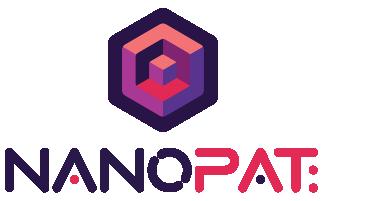
Within the H2020 project NanoPAT, three novel complementary real-time particle size characterisation technologies (Process Analytical Technologies (PAT)) have been further developed. Moreover, they have been tested, validated and demonstrated in five industrial case-studies, demonstrating the viability of the proposed PAT solutions for the industrial nanoparticle production of polymers, silica, hydroxyapatite, zeolites and ceramic nanoparticles.
The three PATs developed within the project are Photon Density Wave Spectroscopy (PDW), OptoFluidic Force Induction (OF2i) and Turbidity Spectrometry (TUS)
Three of the case studies (CS1, CS2 and CS4) are hosted by large companies (ARKEMA, Covestro, EVONIK) and the other two (CS3

and CS5) by SMEs (Cnano, FLUIDINOVA). Four of the case studies are batch processes (ARKEMA, Creative Nano, Covestro, EVONIK) while one is continuous (FLUIDINOVA). A Research and Technology Organization (RTO) is assigned to support each case study in order to pre-validate the PAT (selected, based on the existing TRL4 results) in downscaled process (TRL5) before moving to semi-industrial process (TRL6). Our RTOs are University of Basque Country (UPV/POLYMAT), University of Potsdam (UP), as well as the BioNanoNetmembers Medical University of Graz (MUG) and Zurich University of Applied Sciences (ZHAW).
We have asked our end users and RTOs to share their experiences with the PATs, highlighting the benefits, advantages, as well as the possibilities observed when installing and

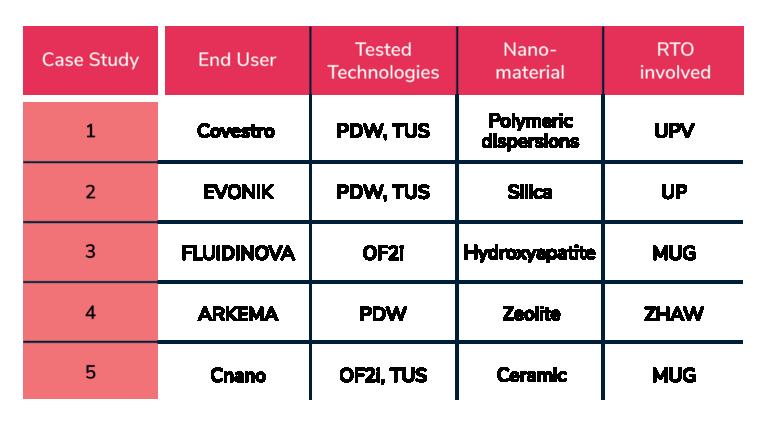
using these technologies. Additionally, they discuss the challenges and limitations encountered.
WATCH THE INTERVIEWS BELOW TO GET MORE INSIGHT!

Interview with Usue Aspiazu, from UPV/POLYMAT, as RTO of PDW, OF2i and TUS technologies with polymers
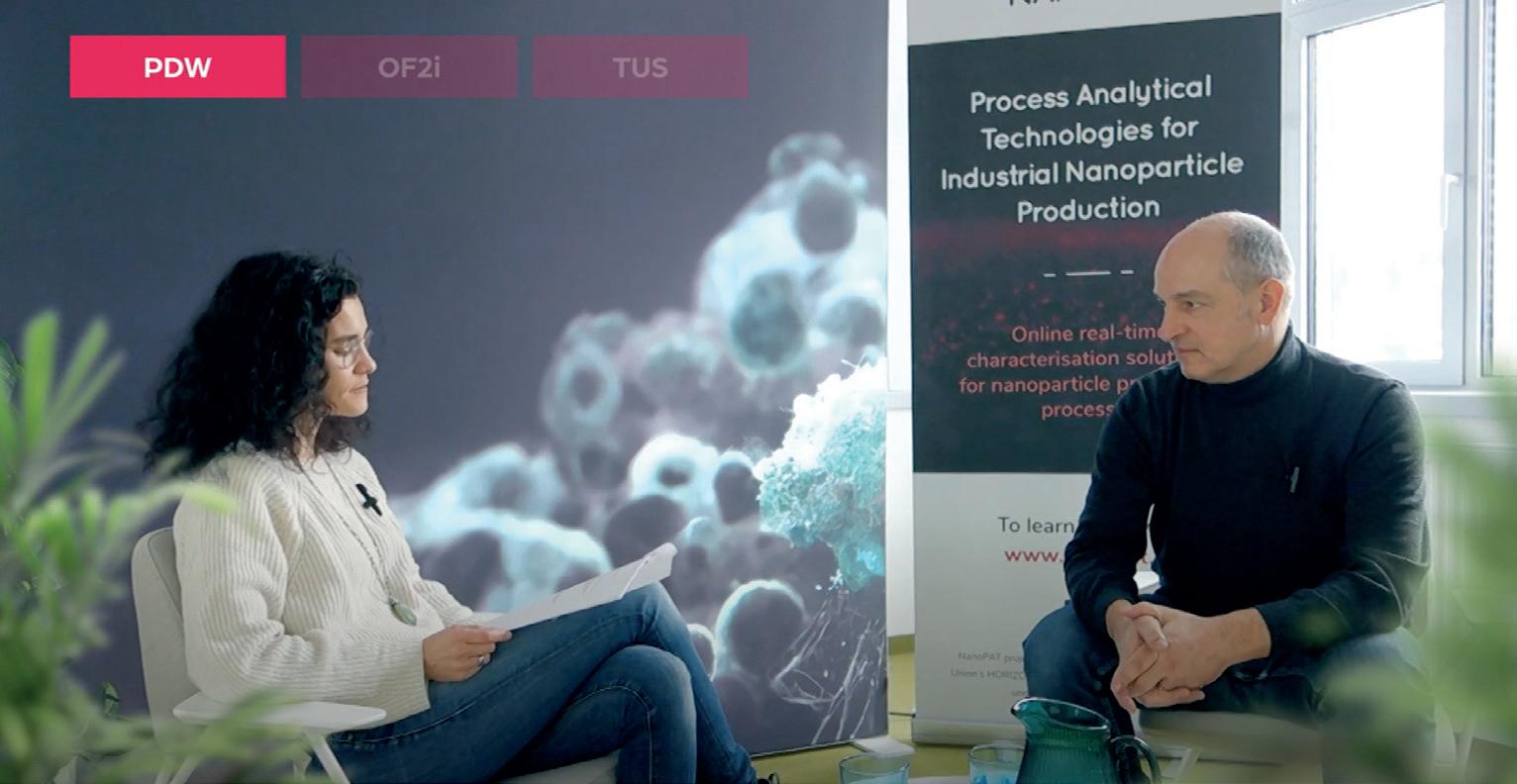
Interview with Achim Ecker, from ZHAW, as RTO of PDW technology with zeolites

Interview with Alex Grigoropoulos, from Creative Nano (Cnano), as end user of OF2i and TUS technologies with ceramic nanoparticles
Role of BNN
Training, Graphic Design, Communication & Dissemination
Contact Beatriz Alfaro Serrano BioNanoNet Forschungsgesellschaft mbH beatriz.alfaro@bnn.at www.bnn.at
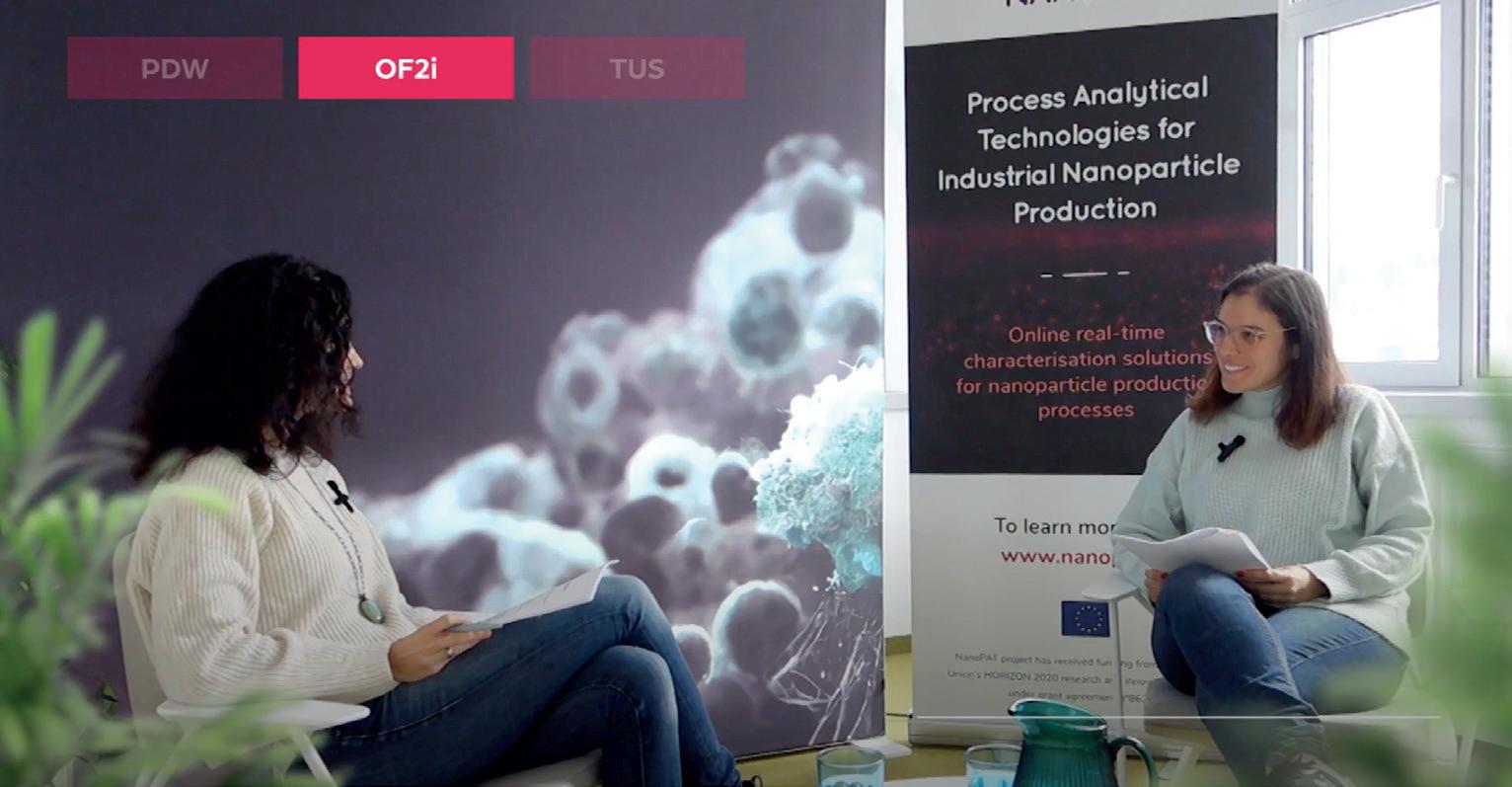
Interview with Catarina Coelho, from FLUIDINOVA, as end user of OF2i with hydroxyapatite
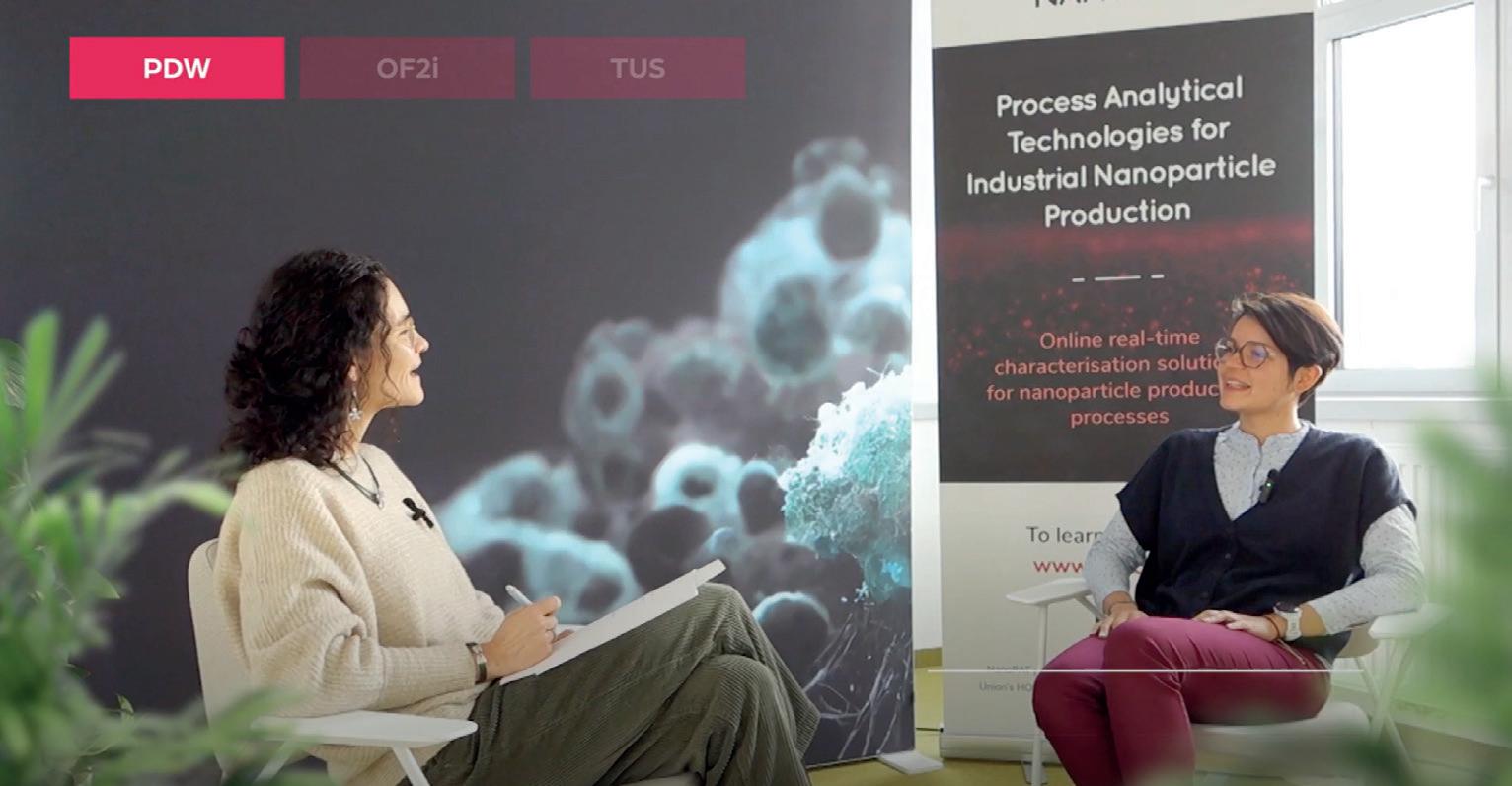
Interview with Heidy Ramirez, from Arkema, as end user of PDW technology
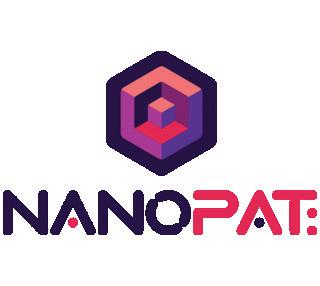

This project has received funding from the European Union’s HORIZON 2020 research and innovation programme under grant agreement n° 862583.

As the H2020 project NanoPAT is coming to an end, we have asked the project partners about their perspectives on the project’s impact and what the project has done for them.
In the following video you can view the impressions of some of NanoPAT partners: Usue Aspiazu (University of Basque Country/POLYMAT), Juan Enriquez (Analisis DSC), Alex Grigoropoulos (Creative Nano), Roland Haas (PDW Analysis GmbH), as well as BioNanoNet members Blanca Suárez Merino and Deven Joshi (TEMAS Solutions GmbH) and Christian Hill (BRAVE Analytics GmbH).

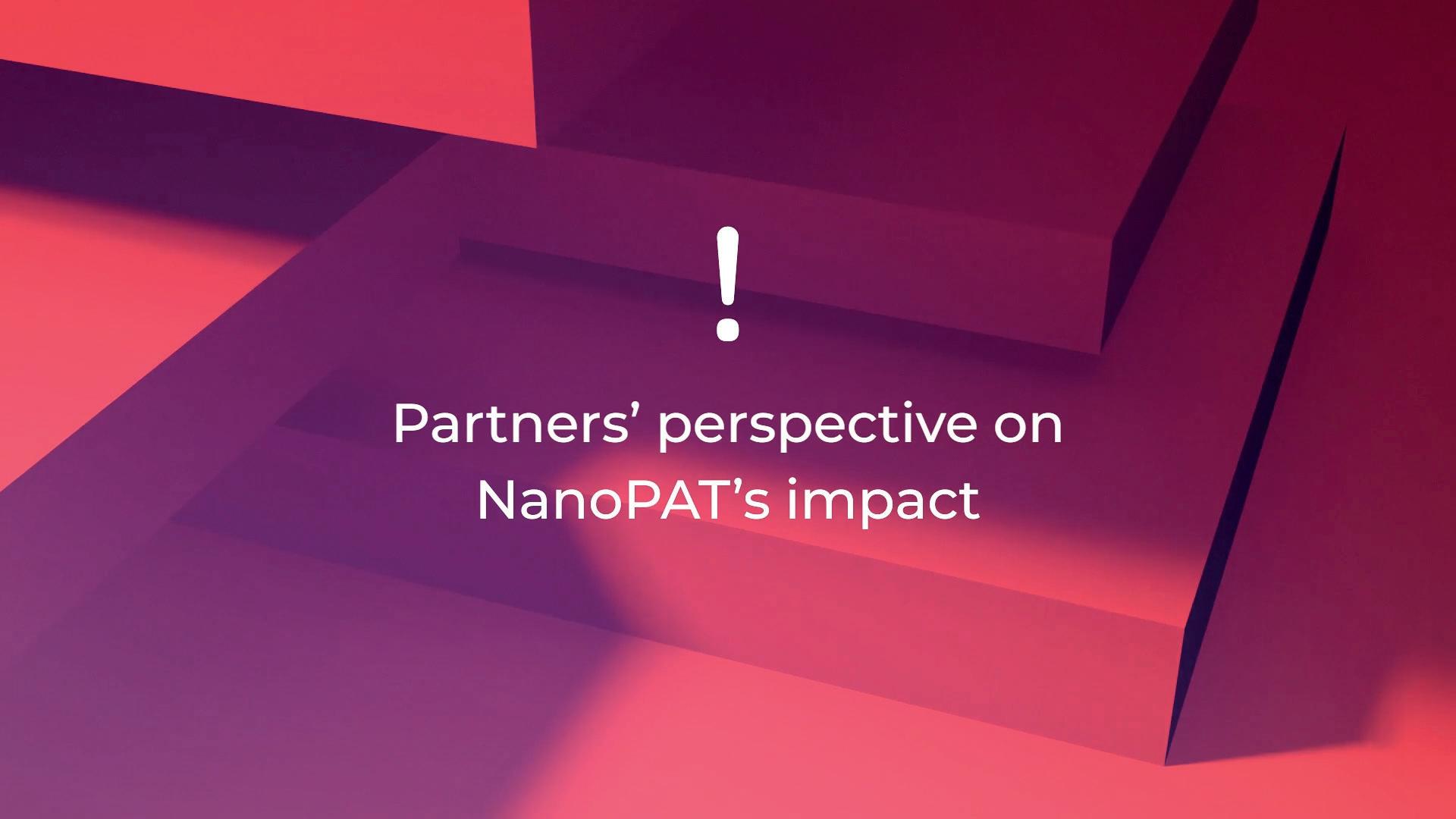
Role of BNN
Training, Graphic Design, Communication & Dissemination
Contact
Beatriz Alfaro Serrano BioNanoNet Forschungsgesellschaft mbH beatriz.alfaro@bnn.at www.bnn.at


This project has received funding from the European Union’s HORIZON 2020 research and innovation programme under grant agreement n° 862583.
HARMLESS webinar on SSbD: DSS demo with AdMa case study
25 April 2024 | 13:00-15:00 CEST, online
HARMLESS webinar on Safe-andSustainable-by-Design (SSbD) for consultancy companies, SMEs and large industry: Demonstration of the user-friendly HARMLESS Decision Support System (DSS) with an advanced material as a case study.
In May 2023, HARMLESS organised a workshop on Safe-and-Sustainable-by-Design (SSbD): Advanced Materials in Product Development for small and medium enterprises (SMEs) , where SME and consultancy companies were introduced to the HARMLESS approach to Safe and Sustainable Innovation in the context of Advanced Materials. A summary of this workshop can be found here (workshop materials available under DOI: 10.5281/zenodo.7974563).
HARMLESS now has the pleasure of organising a second SSbD webinar targeted primarily to consultancy companies working in the SSbD field, but also to SMEs and large industry stakeholders in product development, to demonstrate the use of the userfriendly HARMLESS decision support system
(DSS) with a case study on perovskites for automotive catalysis. This workshop will take place online on 25th April 2024 .
This second webinar is titled “HARMLESS webinar on Safe-and-Sustainable-by-Design (SSbD) for consultancy companies, SME and large industry: Demonstration of the user-friendly HARMLESS Decision Support System (DSS) with an advanced material as a case study” . It will provide an overview of the stage-gate HARMLESS approach to SSbD of advanced materials in product

development followed by an introduction to the user-friendly DSS for application of this SSbD approach. After a short presentation on perovskite for automotive catalysis, we will dive into a demonstration of the DSS for this case study. Towards the end of the webinar we will provide the opportunity to analyse if the HARMLESS DSS can also be applied to the participants’ materials.
More information

TechForum Millstatt
3-7 June 2024 | Millstatt, Congress Center (Marktplatz 14, 9872 Millstatt, Austria)
The TU Wien, along with BNN, Advanced Microfluidics Initiative, TU Graz, and other partners are pleased to invite you to the TechForum Millstatt.
Academic and industrial partners as well as policy makers will meet the first time in Millstatt to discuss innovation, biomedical engineering, green tech and artificial intelligence topics. In addition to lectures, presentations and discussions, TechForum Millstatt offers various networking events to promote the exchange of ideas, translational research and the practical implementation of current research results and innovations. The TechForum Millstatt aims to strengthen Europe‘s scientific and industrial competitiveness by providing hands-on workshop on microfluidics and biosensor manufacturing, system integration, biology-material interactions and organ-ona-chip technologies.
Further information and the preliminary program .
Please register by 17 May 2024 here.
BioNanoNet Annual Forum & BNN Networking Session 2024 – Satellite Event of ECCPM Forum
12 September 2024 | Graz, Austria & online

On 12 September 2024, we are holding our BioNanoNet Annual Forum in Graz, Austria with the foucs topic: “Sustainability in Pharma”.
The Annual Forum will be a Satellite Event of the ECCPM Forum (European Consortium for Continuous Pharmaceutical Manufacturing) which takes place 11 – 12 September 2024 . On 12 September the ECCPM morning session can be attended by BioNanoNet members. The joint afternoon session will be dedicated to “Sustainability in Pharma” . In the evening the networking event will bring together BioNanoNet members with the partners and joint organizers RCPE –Research Center for Pharmaceutical Engineering and the Human.technology Styria GmbH Cluster. The registration for the BioNanoNet Annual Forum & BNN Networking Session is already open. Please register below.
BioNanoNet members benefit from a 25% discount on the participation fee of the entire ECCPM Forum (11 & 12 September). The BNN Joint Afternoon Session and the Networking Event are free of charge. Please log in to our BNN Members Area to register with this discount: BioNanoNet members area of the BNN website
Benefit from an early bird registration for the ECCPM Forum until 31 March 2024 .
REGISTER HERE AS BIONANONET MEMBER
REGISTER HERE AS NON-BIONANONET MEMBER
The agenda of the Satellite Event will be published soon.
More information

Don Orione Artigianelli, Venice, Italy
The 11th International Conference on NanoToxicology – NanoTox 2024 – will take place in the historic center of Venice at Centro Culturale Don Orione Artigianelli on 23-25 September 2024. NanoTox is a forum aimed at personnel from research and academic institutions as well as from industry, governmental agencies, and other relevant organizations interested in:
(Eco)Toxicity of advanced (nano)materials
Hazard and exposure assessment, risk management and governance of advanced (nano)materials
Grouping and read-across

New approach methodologies (NAMs) for risk assessment
Sustainability assessment, Safe(r)-byDesign (SbD) and Safe-and-Sustainable-by-Design (SSbD) of advanced (nano)materials
Toxicity Pathways: nano cell circuits underlying Adverse Outcome Pathways (AOP) and Mode-of-Action (MoA)
Big data management and modelling solutions
The NanoTox 2024 Conference is jointly organized by the leading EU-funded H2020 Projects DIAGONAL , HARMLESS, and SUNSHINE, focusing on the challenges related to safe and sustainable multicomponent nanomaterials by developing novel tools for evaluating human and environmental hazards, strategies for nanomaterial characterization, classification, grouping and read-across for risk analysis and sustainability assessment.
Abstract submission deadline for NanoTox 2024 extended to 5 April!
Register here.
Location: Centro Culturale Don Orione Artigianelli
Contact email address: info@nanotox2024.eu
More information
We hope you enjoyed reading our BNN QUARTERLY! Please do not hesitate to contact us if you have any suggestions or feedback!
Our next BNN QUARTERLY will be published in June 2024 and will focus on the topic “How Innovative Materials contribute to a more Sustainable World” .
BioNanoNet members are welcome to send their contributions regarding this focus topic and also articles about their scientific research until 5 June 2024 ! Articles on other topics can be published any time on the BNN website.

Contact info@bnn.at
Impressum:
Owner and publisher:
BioNanoNet Forschungsgesellschaft mbH
Kaiser-Josef-Platz 9, 8010 Graz, Austria
UID: ATU 63046279, FN 285326 y
Graphic Design & Layout: Attila Primus
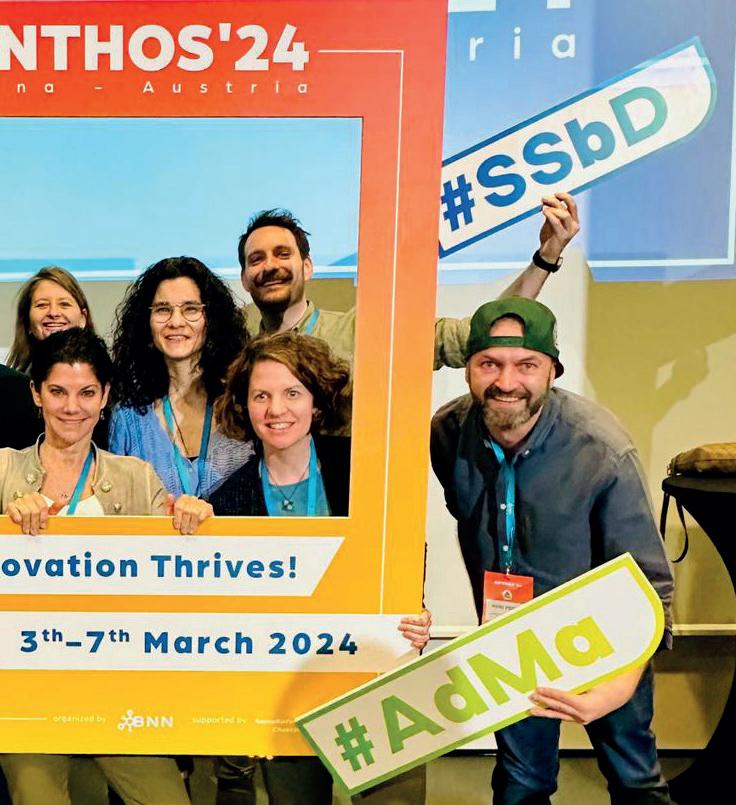
The team extends its thanks to all members, partners, and colleagues for a successful ANTHOS'24.
With our best wishes, the BNN team